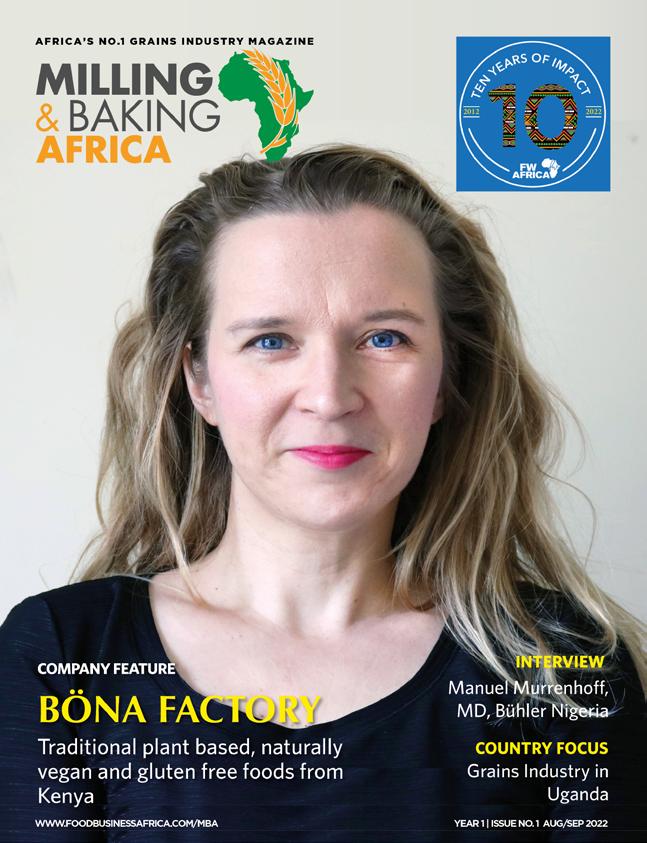










They say that some dreams are valid - none of them has been as valid as our dream to enter the magazine publishing business nearly 20 years ago.
It all started with a trip back in 2004 to the US sponsored through the USDA Cochran Fellowship Program, where over the course of the program, I came across scores of magazines wherever we visited which covered all the spheres of the food industry - from baking, to meat, to the general food industryAmerican Institute of Baking, Kansas State University, the headquarters of commodity giants ADM and Cargill and many more interesting locations.
Eight years later in September 2012, we did register a business name that was premised on publishing Africa's first food industry magazine, out of South
Africa, which eventually was released in February 2013, with the title Food Business Africa.
It has been an interesting journey with Food Business Africa magazine over the last 9 years of publishing this ground-breaking magazine. It has has since become the most important and influential magazine focused on Africa's food, beverage and milling industry.
A lot has changed since the first issue of Food Business Africa landed onto the tables of the food industry stakeholders, and so has been the tremendous change in the food industry in Africa - where we have seen tremendous growth in the diversity of entrepreneurs, regional giants and multinationals investing in Africa's burgeoning food industry.
Over the course of the past decade, our business has changed substantiallyespecially in the last 3 years.
With six publications on our list of magazines - Food Business Africa, Food Safety Africa, CEO Business Africa, HealthCare Africa and Milling & Baking Africa and soon to be published, Packaging Africa, we have become one of the most important publishers of trade, industry focused magazines in Africa, out of South Africa.
Beyond the publishing of magazines, we are also one of the most well-known organisers of a growing list of eventsoriginally in the food industry (such as the AFMASS Food Expo events, Africa Food Safety Summit and a number of new events coming up your way), but also now into the healthcare sector (Africa Health & Wellness Expo), leadership and sustainability events (Africa CEO Summit), awards ceremonies, among others.
As we introduce to you Milling & Baking Africa magazine, our newest addition to our stable of magazines, we are pleased that we have stuck to our original goal of producing magazines that continue to change the African perception, and which celebrate the growth of the African economy, innovation and zeal.
In this inaugural issue, we cover a number of key issues relevant to the grains industry in Africa. From a deep dive into the status of the grains industry in Uganda, to technical articles on yeast and its functionalilty in baked goods and animal nutrition, to latest trends in oven and feed peletting technologies, we have an issue of the magazine that will be worth your valuable time.
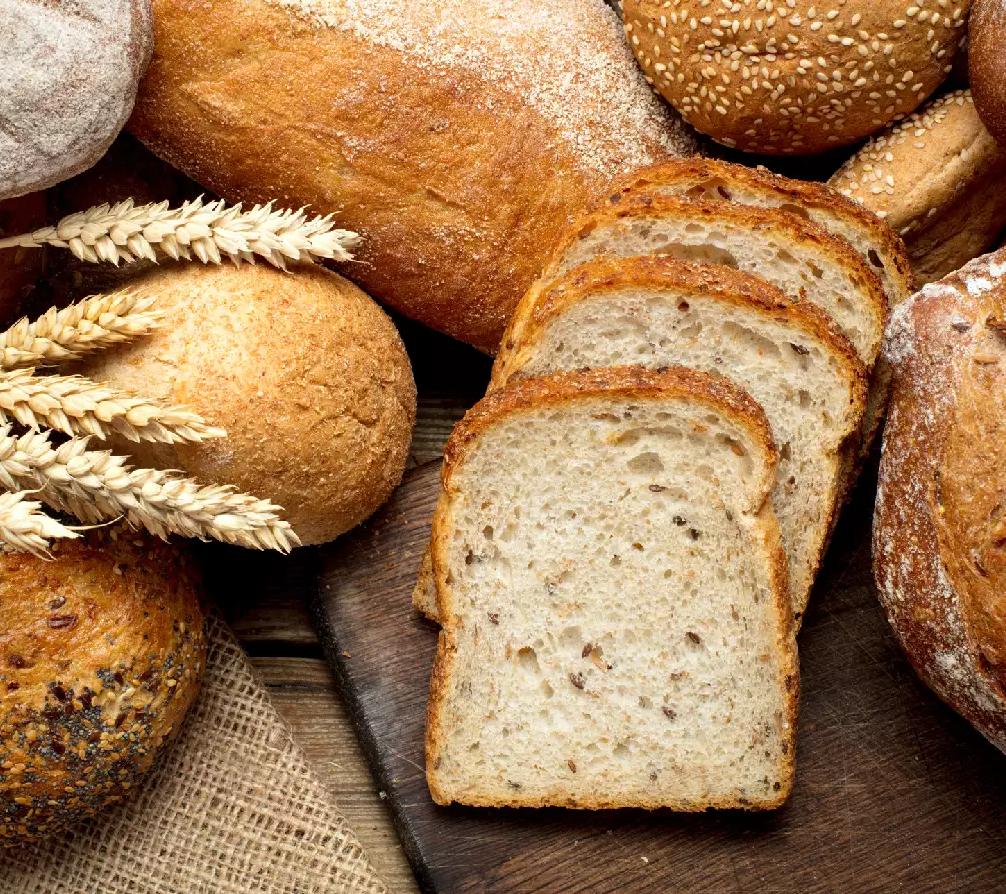
We wish you a delightful read.
Francis Juma Publisher1 Editorial 12 News Updates:
• Dufil Prima Foods merges with its 3 subsidiaries to bolster position in Nigerian market

• AfDB green lights US$1.5 billion African Emergency Food Production loan facility
• Le Duff snaps up Lecoq Cuisine to boost its bakery subsidiary
• Equity Group partners CFAO Group to support farmers increase output
• Cargill, Continental Grain finalize US$4.5b acquisition of Sanderson Farms
• Kenya wants greater share of Zambia, Tanzania and Uganda maize exports
• Tanzania Grain Board to invest US$8.7 M on construction of milling plants
• REMBE’s upgraded EXKOP isolation system is a safe and effective means of isolating enclosures
• Bühler launches latest optical sorter that cuts energy, water use by 50%
• Charles Ross & Son Co.’s Batch High Shear Mixers bring increased efficiency to mixing
• BoMill introduces new high-capacity grain sorting equipment

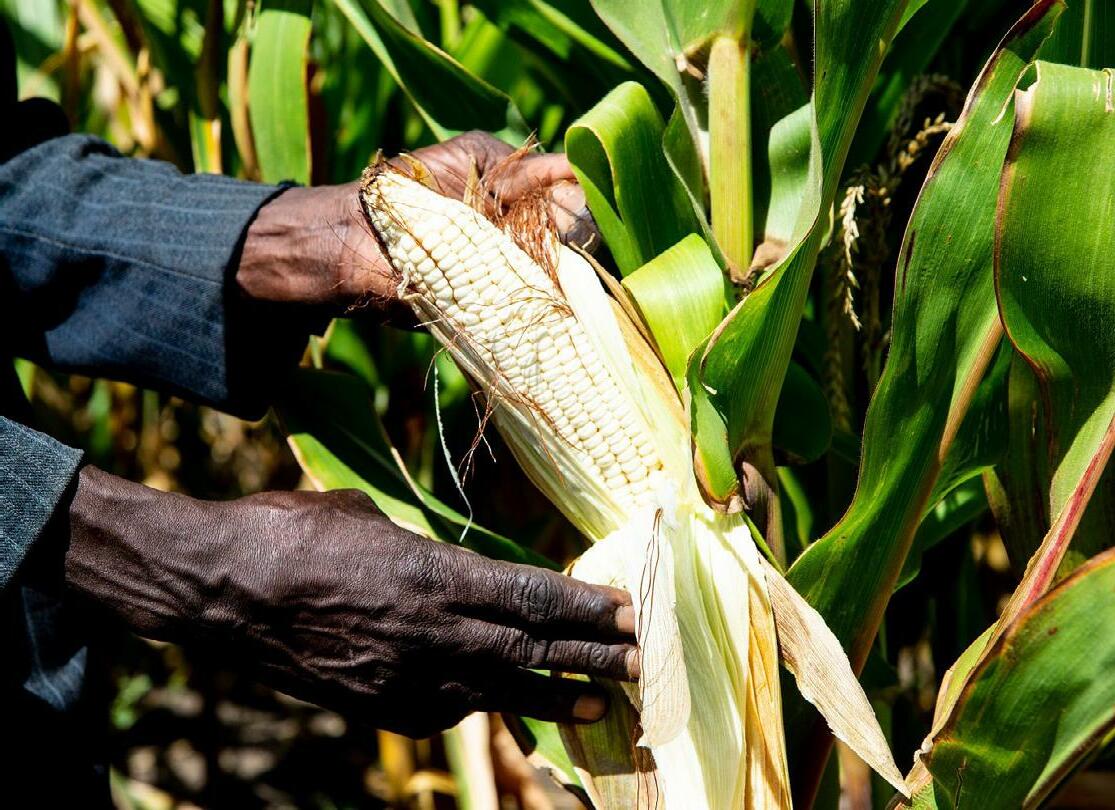













square metres of space and equipment for flour and grain analysis. A trial bakery with the latest machinery, including spiral kneaders, rolling machines, deck ovens and convection ovens, allows for extensive testing. Here, baking processes can be simulated, and the effects of enzymes and other ingredients tested. Tests can be run in collaboration with local mills, and the results quickly implemented in regular operations.
The laboratory will be under the direction of David Nolte. A trained miller, for 13 years, he has worked for Mühlenchemie as an Applications Engineer for Milling and Rheology. Commercial direction of the new location will be in the hands of Khalif Steinbrich, Area Sales Manager East Africa. He is very familiar with the African market and has extensive experience in customer consulting.
Flour treatment specialist Mühlenchemie has opened a new Technology Center in Nairobi, the capital of Kenya, in 2021. The subsidiary will operate as Stern Ingredients East Africa Ltd. From here, the MC Technology Center will help the milling industry in East Africa to maintain consistently high standards in the production of flour, and react more quickly to changing requirements in the markets and in raw materials.
The Kenyan location is of strategic importance for the African milling industry. The volatile grain market
presents East African mills with the challenge of responding ever more quickly to new conditions. Since the region is heavily agricultural, much of the raw materials like wheat and corn are locally sourced. With the analysis capacity of this new location, Mühlenchemie can develop solutions for individual needs and make them available to mills much faster. Furthermore, personal communication between customer and consultant from field to final product will be much more direct.
The heart of the new subsidiary is a baking laboratory and technical centre for development and consulting, with 400
“With its extensive outfitting, the new subsidiary will not just provide new impetus for the milling industry in its region, but will also be a milestone in the standardisation and enrichment of flour on the entire continent,” says Norman Loop, Regional Director Middle East & Africa at Mühlenchemie. “The new facility is intended as a knowledge hub for these specialists and for users, and will make communication and deliveries much faster.”
"Working together and creating solutions" is Mühlenchemie's motto in Africa. This motto keeps coming to life. Stern Ingredients Southern Africa will open its third site on the continent in Johannesburg before the end of 2022.
Dialogue. To us that means getting up and going to our customers, getting to know you and finding out what you want. Thanks to modern laboratories and production facilities close to our customers, we can quickly develop the right solutions and users can quickly test them. We like being close to our customers. Because that way, they get what they need.















 ASHISH PANDE Country Head, Olam Agri, Nigeria
ESSAM EL-MADDAH HR & General Secretary Director, Danone Egypt & North East Africa
JUSTIN ARCHER COO East Africa & Group Head of Sustainability, Sucafina SA
CLAUDIA CASTELLANOS Managing Director, Black Mamba
JOACHIM WESTERWELD Executive Chairman, Bio Food Products
MILLICENT A. ADOBOE Co-Founder, Achiever Foods Ghana
CAESAR ASIYO Chief Development Officer, Victory Farms
SAINT-FRANCIS TOHLANG Corporate Affairs Director, Nestle East & Southern Africa
NICO ROOZEN Honorary President, Solidaridad Network
ROZY RANA Managing Director, Dormans Coffee
GAURAV VJ CEO, 260 Brands
BRETT THOMPSON Co-Founder & CEO, Mzansi Meat
ASHISH PANDE Country Head, Olam Agri, Nigeria
ESSAM EL-MADDAH HR & General Secretary Director, Danone Egypt & North East Africa
JUSTIN ARCHER COO East Africa & Group Head of Sustainability, Sucafina SA
CLAUDIA CASTELLANOS Managing Director, Black Mamba
JOACHIM WESTERWELD Executive Chairman, Bio Food Products
MILLICENT A. ADOBOE Co-Founder, Achiever Foods Ghana
CAESAR ASIYO Chief Development Officer, Victory Farms
SAINT-FRANCIS TOHLANG Corporate Affairs Director, Nestle East & Southern Africa
NICO ROOZEN Honorary President, Solidaridad Network
ROZY RANA Managing Director, Dormans Coffee
GAURAV VJ CEO, 260 Brands
BRETT THOMPSON Co-Founder & CEO, Mzansi Meat
Year 1 | Issue 1 | No.1 | Aug/Sept. 2022
Francis Juma
EDITORIAL
Madeleine Orina | Paul Ongeto
ADVERTISING & SUBSCRIPTION
Jonah Sambai | Virginia Nyoro
DESIGN & LAYOUT
Clare Ngode
PUBLISHED BY: FW Africa
P.O. Box 1874-00621, Nairobi Kenya Tel: +254 20 8155022, +254725 343932 Email: info@fwafrica.net Company Website: www.fwafrica.net
Milling & Baking Africa is published 6 times a year by FW Africa. Reproduction of the whole or any part of the contents without written permission from the editor is prohibited. All information is published in good faith. While care is taken to prevent inaccuracies, the publishers accept no liability for any errors or omissions or for the consequences of any action taken on the basis of information published.







NIGERIA – Dufil Prima Foods Plc, Nigeria’s pioneer and largest producer of instant noodles, has merged and absorbed three of its subsidiaries De United Foods Industries Limited (De United), Northern Noodles Limited (NNL) and Pure Flour Mills Limited (PFM).

Merger of the four operations, focusing on noodles, pasta, wheat flour and vegetable cooking oil processing, is aimed at consolidating the company’s efforts in becoming one of the largest FMCG companies in Nigeria.
With Dufil Prima Foods Plc as the surviving and enlarged company, it is set be a stronger manufacturing
company that has the critical mass, product line diversity, structure, and market intelligence to compete in the same market as other big manufacturing companies.
Chief Operating Officer, Dufil Prima Foods Plc, Adesh Jain said, “This is a huge step towards consolidating our status as Africa’s largest pasta and instant noodle manufacturer.
“This is an attractive combination for stakeholders as customers will benefit from our wider and better-integrated array of products and services; and shareholders will have the opportunity to continue to participate in the success
of a bigger enterprise.”
Following the merger, the company still has two more independent subsidiaries in Nigeria i.e., Insignia Print Technology LFTZ Enterprise and Raffles Oil LFTZ Enterprise, alongside its Ghanaian operations.
UK – GA Pet Food Partners has invested US$104 million to build a new modern ingredient factory to enable it to meet the current demand.

The new production site called Ingredients Kitchen will be able to test, process and keep ingredients as well as ready-to-use products of the pet food industry.
The Ingredients Kitchen currently processes more than 600 ingredients by more than 130 distributors and has a couple of more useful features.
These include a Pick and Mix system,
a software watching every step of the production, a lander to store 5 million kg and two automated guided vehicles (AGVs) to bring products and ingredients around the factory.
The new Ingredients Kitchen offers the opportunity to test ingredients like wheat or rice in one of its laboratories to check quality and safety, as they enable a full traceability and a risk evaluation for the particular ingredient. GA also invested money in a new completely automated warehouse.
GA Pet Food Partners invests US$104m into a modern ingredient factory to meet pet food industry demand
Dufil Prima Foods merges with its 3 subsidiaries to bolster position in
THIS IS A HUGE STEP TOWARDS CONSOLIDATING OUR STATUS AS AFRICA’S LARGEST PASTA AND INSTANT NOODLE MANUFACTURER.




MOROCCO – Marrakech Fine Food (MFF), a Moroccan agrifood manufacturer, has inaugurated a US$7 million biscuit and chocolate processing factory.

This follows the signing of an investment agreement between the food processor and the government of Morocco in 2021 focused on industrial development and job creation in the Maghreb kingdom.
Opening of the new factory is set to create 80 direct jobs and boost local production of top-of-the-range confectionery.
Speaking at the inauguration, The Minister of Industry and Trade, Ryad Mezzour said that the new investment “will contribute to strengthening the industrial sovereignty of our country and to the development of national exports.”
MFF is part of the Imperium Holding Group. Through its MFF subsidiary, the Group has a leading market position in the high-end biscuit and chocolate segment, with a development strategy aimed at meeting market needs and to diversify its range of top-of-the-range products intended mainly for export.
AFRICA — The African Development Bank Group has begun disbursements of loans under its US$1.5 billion African Emergency Food Production Facility designed to help African countries avert a looming food crisis caused by Russia’s war in Ukraine and persisting impacts of the Covid-19 pandemic.
The facility seeks to produce an additional 38 million tonnes of food –worth US$ 12 billion – in Africa over the next two years.
The first beneficiaries of the fund are 850,000 Senegalese small-scale farmers, as the board of the developmental institution has issued €121 million (US$121m) loan to the West African country for implementation of an emergency agricultural programme.
Under the facility, Nigeria’s National Agriculture Growth Scheme – Agro has been granted a US$134 million loan to scale up food production and boost livelihood resilience.
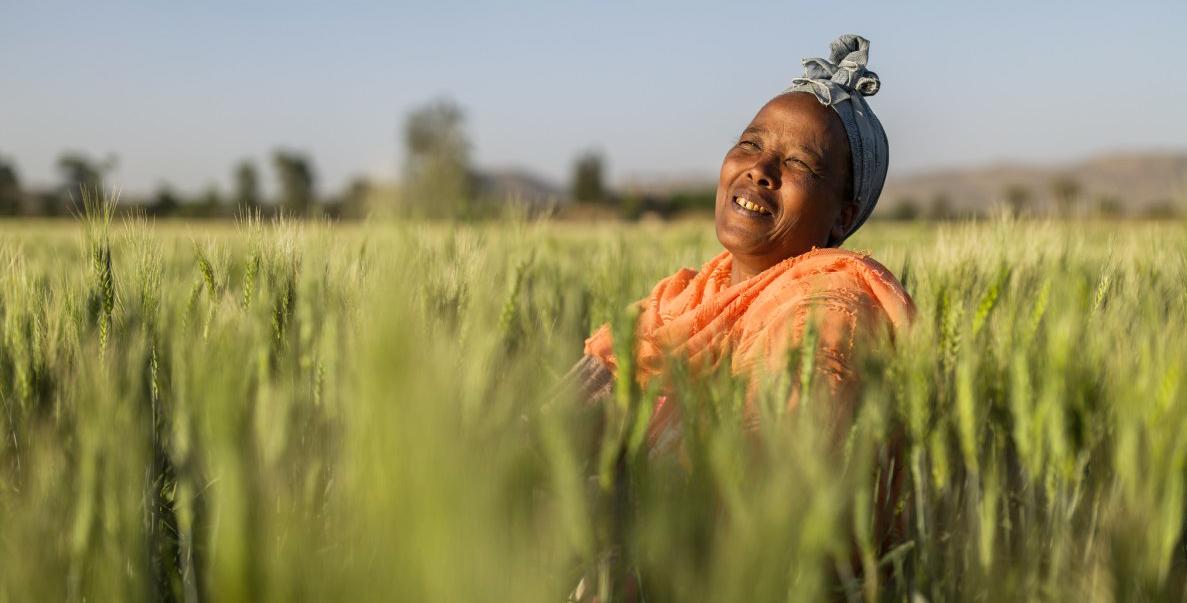
In Egypt, the African Development Bank Board of Directors has approved a loan of US$ 271 million to finance the country’s Food Security and Economic Resilience Support Program.
The program includes two major components: Support for the Food Security Response and Build Private Sector and Fiscal Resilience.
The AfDB has also approved a
US$73.5 million loan to finance Tanzania Agricultural Inputs Support Project and a further €63 million (US$63m) to significantly boost cereals and oil seeds production in Kenya by over 1.5 million metric tonnes over the next two years.
The AfDB has also approved a US$8.1 million grant to South Sudan to fund the ongoing Agricultural Markets, Value Addition and Trade Development Project (AMVAT) which seeks to reduce
Moroccanconfectioner
Marrakech Fine Food opens new processing unit worth US$7m.
AfDB green lights US$1.5 billion African Emergency Food Production loan facility




NIGERIA — Nigeria’s leading integrated Food and Agro-allied group, Flour Mills of Nigeria Plc has reported a 45.3% rise in first quarter revenue to N339.6billion from N233.7billion reported in prior corresponding period.
The bullish top-line performance was supported by solid growth across all the company’s segments including the Food, Agro-Allied Sugar, and Supportive operations.
The Food segment attained 45% rise in revenue to N213.166 billion from N146.925 billion in 2021 while AgroAllied segment registered a 37% growth to N65.652 billion from N47.688 billion.
Its sugar portfolio saw a 64% revenue with stabilized trading environments and strong demand for brown sugar which is locally produced at its farm in Sunti.
Meanwhile the animal feeds business attained 21% revenue growth, driven by investments in logistics infrastructure and farmer training extension services across the country.
The interim results which were released to the Nigerian Exchange Group (NGX) indicated that operating expenses increased by 52% to N14.7 billion, versus the prior period of 2021 which stood at N9.7billion.
The miller continued to focus on investments enroute to consumer redistribution resulting in 8,000 new
outlets in Q1 2022 and launched new SKUs in the starch and fertilizer business segments, and commenced operation of fertilizer blending plant in Kaduna with a 90 tonnes per hour capacity.
Gross profit reached N33.2 billion in Q1’22, up from N25.7 billion in Q1 2021. In the period under review, FMN reported a nearly one per cent increase in profit before tax to N7.33billion in Q1 2022 from N7.26billion in Q1 2021, while profit after tax closed Q1 2022 at N5.49billion, representing an increase of one per cent from N5.45billion in Q1 2021.
The Group Managing Director Omoboyede Olusanya, in a statement, stated that despite the challenging socio-economic environment, the company continued to deliver strong business performance with resilience and operational excellence. “Our increased operational efficiency with
accelerated plans for our supply chain optimization, content localization, and cost optimization across our business segments has helped to cushion the sharp rise in the cost of raw materials.
“We would always be committed to our purpose of Feeding the Nation, Everyday through our offerings of quality products and services. The Group is dedicated to achieving sector strategic growth opportunities, both organic and inorganic with keen determination as we continue to create value for our shareholders.”
FMN forecasts future growth following the finalization of Honeywell Flour Mills Plc’s acquisition based on an enterprise value of N80 billion (US$193m). The miller announced its plan to acquire nearly 72% stake in HFM in November 2021, before receiving regulatory approval in May 2022.

the milling industry has put in place measures to protect companies from closing on account of grain shortages.
GMAZ Chairman Tafadzwa Musarara allayed fears that with grain shortages affecting millers, the sector could be forced to cut jobs. “We don’t anticipate any of the milling companies closing down on account of grain shortages,” Musarara told Standardbusiness.
and the market is well supplied and we believe that aggregate demand is slow and it will peak as we enter the agricultural marketing season."
ZIMBABWE
“We have a plan in place. We are currently operating at 45% capacity
The GMAZ secured 400,000 tonnes of maize as a means of ensuring food sufficiency in the country, following an invitation by Cabinet for private grain millers to commence maize imports using free funds to complement local stocks.

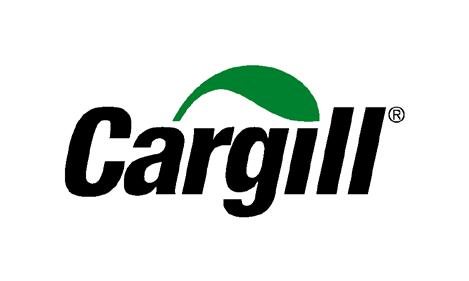








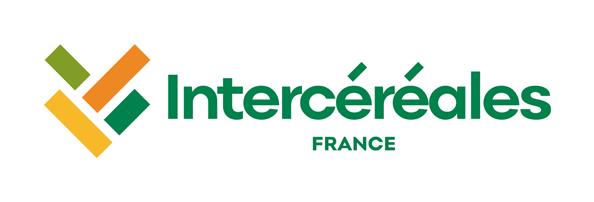

Moulins d’Abidjan (GMA), an agrifood company specializing in the production and marketing of flour and wheat products has invested US$15.7 million on 6 new cereal silos in Abidjan, Ivory Coast.

The new installations, which have a total capacity of 28,000 tonnes, allow the company to increase its storage potential in the nation to 50,000 tonnes of grain and achieve a crusher volume of 300,000 tonnes of cereals annually.
With the added capacity, GMA will be better positioned to meet the growing flour needs of the national market, both from consumers and from industrialists in the wheat-flour bakery sector.
“This storage capacity increase is one of our parent company Seabord Corporation’s objectives to be more competitive in the Ivorian millers’ market,” indicates Marc Alexy, deputy general manager of GMA.
This inauguration, which comes in a context of soaring wheat prices, should comfort the Ivorian government in its strategy to ensure a regular supply of wheat flour that meets the required standards in terms of safety.
SWITZERLAND Swiss technology group Bühler brought together decision makers from across the World at its Networking Days in Uzwil, Switzerland in late June, in a demonstration of the commitment of businesses to be at the forefront of tackling the climate crisis to protect and restore nature and biodiversity and close the gap in wealth distribution.
At the event, Bühler Group CEO, Stefan Scheiber, told guests from more than 1,000 representatives of the world’s leading companies from 95 countries in the food, animal feed, and mobility sectors that despite businesses recently facing myriad obstacles, the examples of vaccine research, advances in digitalization and the development of communication at scale during the lockdown all demonstrated the capacity of business to rise to global challenges when required. “We have experienced the power of science and innovation with industries collaborating at a new scale,” said Scheiber. “In our industries the innovation rate has never been as high as it is today, which creates impact because we need new technologies and widespread collaboration to tackle new challenges, and at the same time secure the future of our businesses in a responsible way. We need technologies, we need collaboration, and responsible leadership to shape the future.”
The 2022 event with the motto “accelerating impact together” focused on leadership, the need for corporate purpose, education, technology, and innovation, along with examples of how companies are leveraging technology to protect biodiversity, improve food security, and promote social equality.
Speaking at the event, Ranjay Gulati, Harvard Professor of Business Administration, and author of “Deep Purpose: The Heart and Soul of HighPerformance Companies”, warned company leaders not to get wrapped up in complex metrics around Environmental,
Social and Governance (ESG) and Corporate Social Responsibility (CSR) when companies achieve far more impact by having a clearly articulated social purpose.
In a session on how good business leadership is needed to mitigate climate change, Satya Nadella, CEO of Microsoft, said that in uncertain times leadership qualities could be distilled down to three key attributes: he told delegates that when assessing future leaders at Microsoft he looked for their ability to generate energy, deliver results under constraints, and create clarity when none exists. “We live in a complex uncertain world, there will always be ambiguity in our work, true leaders always bring clarity and make a call even during uncertain times,” said Nadella.
Speaking in the same session keynote speaker Christian Klein, CEO of SAP, the German multinational software corporation with over 400,000 customers globally, spoke of the need for leaders to thoroughly understanding their industry and business, especially when it comes to complexity within supply chains.
Delegates also heard from three startups driving sustainability through hightech advances in cellular agriculture, satellite monitoring of restoration projects, and carbon removal.
In a move to help achieve its own climate change targets to have solutions ready to multiply that reduce energy, waste, and water by 50% in the value chains of its customers by 2025, Bühler announced that it had assessed the impact of its different processing solutions, on waste, energy, and water consumption, land use and CO2e footprint, along with assessments of how the technological advances impact on the United Nations Sustainable Development Goals and the benefits for circular economy. “By evaluating the impact of our solutions, we can then start tracking their overall accumulative impact,” said Ian Roberts, Bühler CTO.
successful Networking
Grands Moulins d’Abidjan invests US$15.7M on 6 new cereal silos in Abidjan
provide essential agricultural inputs to vulnerable farming households before the main agriculture season starts in June. It will ensure that they can produce enough food to meet their needs for the months to come,” said Babagana Ahmadu, FAO Representative to the Sudan.
While the CERF donation is vital in attenuating the starvation threat, FAO added that another US$35 million is urgently needed to ensure adequate support for two million vulnerable farming and pastoral households in Sudan.
SUDAN — The UN Central Emergency Response Fund (CERF) has made a US$12 million contribution towards a new project to provide emergency agriculture and livestock supplies to thousands of farming and pastoral communities in Sudan.
The project aims to rapidly reduce dependence on emergency food assistance in a country where a decade high of 10.9 million people are faced with the looming threat of starvation.

Assistance covers the provision of crop, legume and vegetable seeds, donkey ploughs and hand tools, veterinary vaccines and drugs, animal feed, as well as donkey carts and productive livestock.
It also includes provision of cash and the rehabilitation of community assets such as small-scale water infrastructure, pasture and hafirs, or artificial ponds for harvesting rainwater.
“This generous contribution from CERF means that FAO can urgently
USA — Cargill and Continental Grain Company have finalized their US$4.5billion acquisition of Sanderson Farms, Inc. through a joint venture between the two companies.

Following the takeover, Sanderson Farms has been merged with Wayne Farms, a subsidiary of Continental Grain, forming a new privately held poultry business named Wayne-Sanderson Farms. Clint Rivers, currently CEO of Wayne Farms, has been appointed CEO of the combined company.
The combination of Wayne and Sanderson brings together two companies with different customer bases that could benefit from each other’s
strengths.
With sales in its 2020 fiscal year exceeding US$3.5billion Sanderson
Farms has a huge presence in retail stores such as H-E-B, Walmart and Albertsons with its trays of fresh chicken.
Wayne Farms, with annual sales of more than US$2billion, is largely focused on foodservice and restaurants, including Chick-Fil-A and Jack in the Box.
Together, the two companies would control roughly 15% of U.S. chicken production, trailing only Tyson Foods and Pilgrim’s Pride.
Wayne-Sanderson Farms will operate chicken processing plants and prepared foods plants across Alabama, Arkansas, Georgia, Louisiana, Mississippi, North Carolina, and Texas.
THE
AIMS TO RAPIDLY REDUCE DEPENDENCE ON EMERGENCY FOOD ASSISTANCE
faced by businesspeople in shipping in the produce, which has seen the cost of transport more than double.
The Treasury opened the import window in May to allow millers to bring in maize from outside of Africa duty-free. However, the processors said they could not ship in the commodity because of scarcity and high prices in the international market.

KENYA — Kenya is seeking to limit Zambia, Tanzania and Uganda from exporting maize to other countries at its expense in fresh efforts to curb the surge in maize flour prices and ease the pinch of inflation.
Kenya traditionally receives imports from Uganda and Tanzania, but trade flows in the grain have shifted to other countries, with the bulk of Ugandan maize now heading to South Sudan.
Countries in the region are also
competing for a limited white maize stock for both human consumption and manufacturing of animal feeds following disruption in the supply of the grain from Ukraine and Russia.
Agriculture Cabinet Secretary Peter Munya says the country has opened talks with the three countries to guarantee Kenya a share of the maize export to plug the shortfall in supplies.
Mr Munya also said the government would intervene on logistical challenges
USA — American packaged food company, General Mills has announced plans to acquire TNT Crust, a manufacturer of frozen pizza crusts.
TNT Crust manufactures frozen pizza crusts for regional and national pizza chains, foodservice distributors and retail outlets. Its net sales totaled approximately US$100m in 2021.
TNT’s products, which include partially baked and self-rising pizza crusts, “are highly complementary to General Mills’ existing frozen baked goods portfolio,” according to a company statement.
“This acquisition advances our Accelerate strategy and builds on our
strong position in the fast-growing awayfrom-home frozen baked goods category,” said Shawn O’Grady, General Mills’ group president of North America foodservice.
TNT also gives General Mills a deeper presence in frozen pizza, already having a presence in pizza and frozen offerings with Totino’s pizza rolls and Pillsbury Pizza Crusts.
As part of the acquisition, General Mills will acquire two manufacturing facilities in Wisconsin, and one in Missouri.
The purchase of TNT Crust is expected to be finalized in the first quarter of General Mills’ fiscal 2023 year.




The Kenya Nutrition, Health & Wellness Exhibitions are a range of weekend consumer expos and seminars that are targeted at creating and improving the consumer awareness on healthy living and general well being. The expos are held over the weekend to ensure the attendance of the entire family.




The goals of the Kenya Nutrition, Health & Wellness Exhibitions are:
• Provide a forum for food and beverage processors, distributors and importers to interact directly with consumers, with a goal of informing the consumers of the unique features and benefits of their products in relation to healthy eating and living;
• Provide a forum for providers of health, personal and home hygiene products to interact directly with consumers
• Bring together medical, nutritional, healthcare and wellness experts and practitioners face to face with consumers to discuss disease management, lifestyle choices, diet management, wellness goals and practices with a view to imparting the right knowledge to the consumers;
• Provide a platform for a number of industry associations and corporates to interact with consumers and the community, with a view to
TANZANIA — Tanzania Cereals and Other Products Board (CPB) is set to invest US$ 8.7 million to construct three new maize flour and paddy processing and milling plants with the aim of strengthening its competitiveness and exploring the emerging trade opportunities in the East Africa region.
The first facility is a maize-cassava composite flour processing plant to be set up in the city of Mwanza, with a value of US$2.1 million upon completion and an estimated daily production of 125 tons of flour mixtures made from maize and cassava.
The second plant is a paddy milling factory set to be constructed in Keyla district Mbeya region, with an expected daily production capacity of 96 tons of rice. The third factory will be installed in the town of Mzizma and is expected to have a processing capacity of 100 tons of maize flour per day.
The funds will also enable the CPB to install new warehouses and silos in order to increase its grain storage capacity to 600,000 tonnes, compared to the current 120,000 tonnes.
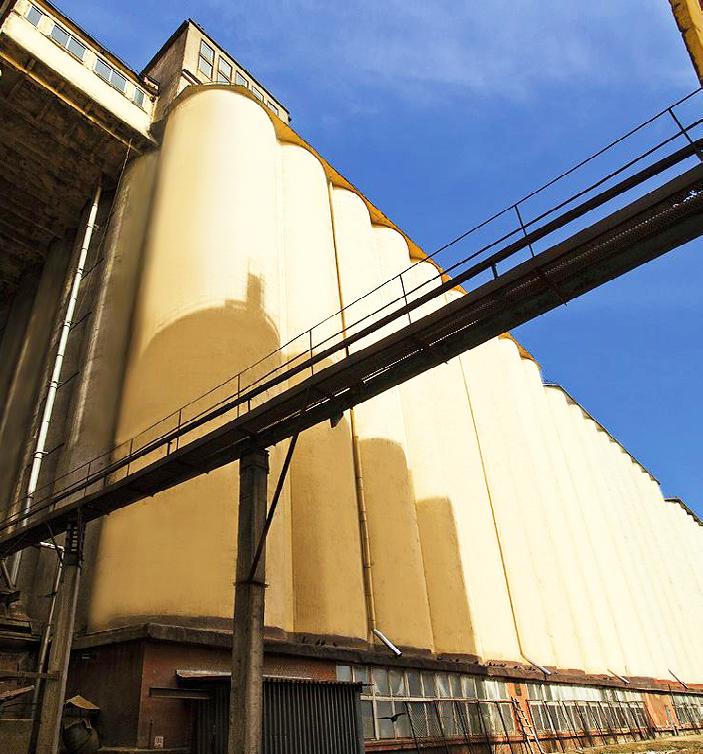

KENYA — The Government of Kenya has issued additional tariff exemptions for genetically engineered Bt. cottonseed cake, distillers’ dried grains with solubles, and rapeseed cake to address rising feed costs.
With the exception of Bt. cottonseed cake, the June gazette requires most feed ingredients to be 99.1 percent free of GE content to benefit from market entry and duty exemptions.
However, this threshold effectively excludes GE-derived products like DDGS. Kenya’s primary feed constraint remains a lack of an adequate supply of ingredients from non-GE producing countries.
International supplies of key feed ingredients are dominated by GE-producing countries, making conventional alternatives relatively scarce.
Additionally, advance contracting of
conventional crops reduces the supply of non-GE soybeans available for shortterm buying, complicating purchases for immediate delivery.
The revision stipulates that import of yellow corn, Soybeans, soy meal, sunflower cake and white sorghum must be accompanied by a certificate of conformity issued by KEBS, must only be used for the manufacture of animal feeds and must have been imported on or before October 31, 2022.
LIBERIA – Liberia’s rice value chain is set to benefit from a EUR 4 million (US$4.3m) support from the European Investment Bank (EIB), aimed to boost performance of the sector and enhance food security in the country.

The overall investment program is expected to support the entire rice value chain, improving production, building irrigation, upgrading food laboratories, enhancing warehousing and logistics.
This will in turn reduce Liberia’s dependency on rice imports to improve food and nutrition security and create local jobs in rice production, storage and distribution. It will further reduce the impact of the war in Ukraine and recent global economic shocks on Liberia.
Over the coming months, detailed feasibility studies will identify priority investment that can transform rice production in Liberia and enable large scale financing across the sector.
“The European Investment Bank is committed to scaling up investment to strengthen food security, improve domestic agricultural production and create jobs and reduce the impact of global food supply shocks on local consumers,” said Ambroise Fayolle, European Investment Bank Vice President.
Tanzania Grain Board to invest US$8.7 M on construction of milling plantsCOMMODITY TRADE
Liberia to cut on rice imports dependency courtesy of US$4.3m support from EIB
BRAZIL — Brazilian biofuels company
BSBIOS is set to put up an initial investment of US$58.25 million into the construction of the first large-scale ethanol plant in the state of Rio Grande do Sul processing wheat.
The project will be developed in two phases. The first phase is designed with an annual production capacity of 111 million litres of ethanol with production set to start in the second half of 2024. The second stage will expand the capacity of the plant to 220 million litres by 2027.
Currently, Rio Grande do Sul imports 99% of its ethanol to meet demand, and the new plant will supply 23% of this need by 2027 when it reaches full capacity.
The BSBIOS investment comes as part of the State Policy of Stimulus to Ethanol Production, which created the State Program for the Development of the Ethanol Production Chain (ProEthanol) to encourage more production within the state, a region not well-suited
for growing sugarcane for ethanol.
BSBIOS also has partnered with Biotrigo Genética, a leading company in genetic improvement of wheat in Latin America. The company is working on
the genetic development of two wheat cultivars with high levels of starch exclusively for ethanol production.
in the animal feed space and is set go towards accelerating the implementation of localized, sustainable complete feed production in sub-Saharan Africa.
The grant will directly fund 21 Hendrix4U complete feed production projects initially in Ghana, Ivory Coast, Nigeria and Uganda.
USA — Post Holdings, an American consumer packaged goods holding company, is set to invest US$110 million to expand its cereal production capacity its Sparks, Nevada facility.
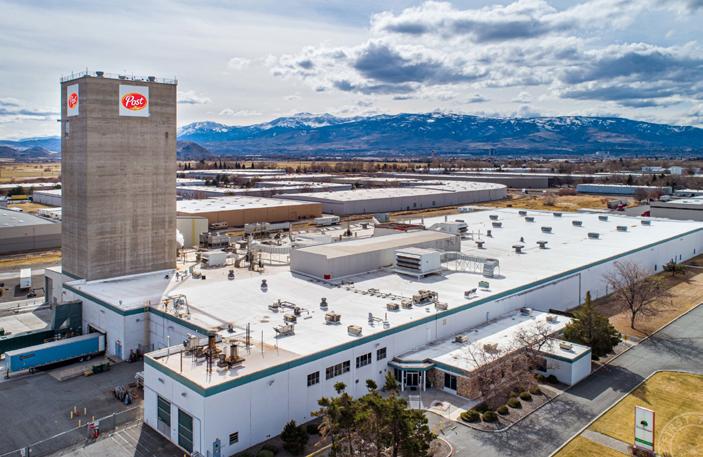
The investment will address capacity constraints, reduce transportation costs and to serve West Coast customers more efficiently.
Project planning and implementation will begin immediately and once the expansion is completed— projected for 2025— it will create approximately 30-40 new jobs.
“Adding capacity in Sparks will help us balance our network geographically and provide us with greater flexibility to best serve our customers,” said Nicolas Catoggio, President and CEO, Post Consumer Brands.
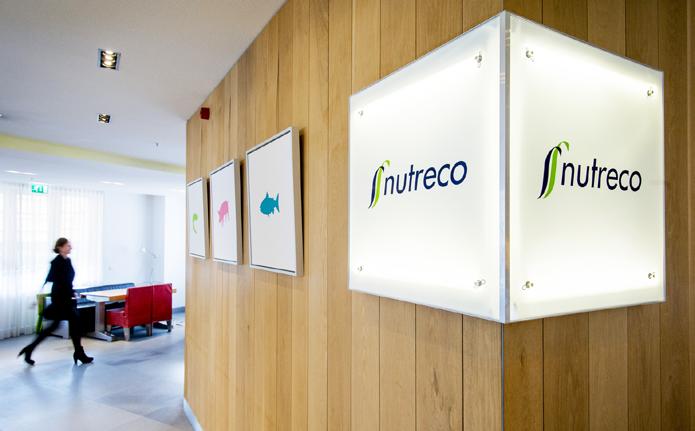
AFRICA —– Nutreco, a Dutch producer of animal nutrition, fish feed and processed meat products, has received a US$4.8 million grant to establish feed mills to hard-to-reach communities in Africa
The grant, awarded by the Bill & Melinda Gates Foundation, is one of the first investments from the foundation
Hendrix4U provides a ‘factory-in-abox’ for rural areas ensuring access to quality compound feed production for small-scale producers, in a financially sustainable way, said Nutreco.
In addition to the facilities themselves, feed-producing distributors will learn how to evaluate raw materials in terms of quality and nutritional values to validate the use of local crops for specific animal nutrition applications.
The plant expansion is as wager that demand for its portfolio of cereals will continue as it is and with 34.4 million people living on the West Coast, making up roughly 11% of the U.S. population, according to U.S. Census data, Post has a large market base there.
The plant addition appears to be the newest construction project for Post, after having announced last year plans to spend US$86 million to construct a new 215,000-squarefoot manufacturing facility in West Jefferson, Ohio.
THE PLANT WILL SUPPLY 23% OF RIO GRANDE DO SUL'S ETHANOL BY 2027 WHEN IT REACHES FULL CAPACITY.
hard-to-reach communities in AfricaFOOD SECURITY
Post Holdings to invest US$110M to expand Nevada facility cereal production capacity
significantly reduce its imports
Rice is one of the main food products imported into Cameroon. According to the National Institute of Statistics
CAMEROON — The Islamic Development Bank (IsDB) has approved a loan of US$ 176.12 million to the Cameroonian government to contribute to rice self-sufficiency and enhance economic growth.

The objectives will be achieved through the development of 5,000ha of land; rehabilitation of roads; construction of markets; construction of storage facilities; establishment of rice processing units; capacity building of farmers and other stakeholders; and access to finance.
This would result in an increase in rice productivity from 4.5 Ton/Ha to 6 Ton/Ha, an increase in rice National production by 10%, the creation of 210,000 jobs and a reduction in postharvest losses.
The Cameroonian Minister of Economy, Alamine Ousmane Mey, who was also present at the meeting, said the resources will be used to promote the local rice sub-sector via the Rice Value Chain Development Program. With this initiative, the government seeks to boost the local production of rice and
China, Zambia sign agreement on soya bean meal, stevia exports

ZAMBIA — Zambia and China have signed two protocols on sanitary and phytosanitary export of soya bean meal and stevia leaves to the Asian country.
The protocols were signed by Chinese Ambassador to Zambia Du Xiaohui and Zambia’s Minister of Agriculture Mtolo Phiri in the presence of Zambian President Hakainde Hichilema who said it was a mark of true friendship between China and Zambia.
“We are very delighted that we have another market for our agricultural products,” said the president, noting that the move will ensure more trade cooperation between the two countries, which will create more jobs in Zambia.
The Chinese envoy said after signing the two protocols that China will strengthen its cooperation with Zambia in the agriculture sector.
The deal comes on the heels of an announcement by Zambia’s Ministry of an increase in soya bean production in the 2021/2022 farming season. With an estimated production of 475, 353 metric tonnes, oilseeds stakeholders have allowed the Grain Traders Association of Zambia-GTAZ to export 100,000 metric tonnes of soya beans.
This will allow the traders to participate in soya beans marketing and venture into the export market, which will in turn be of benefit to the entire value chain which is key to future expansion of
(INS), in the first half of 2021, rice alone accounted for 5% of Cameroon’s total imports, which amounted to US$ 2.9 billion for 5.07 million tons of goods.
soya beans production in Zambia, one of Africa's leading producers.


SINGAPORE — Olam Agri, the food, feed and fiber agribusiness subsidiary of Singapore-based Olam Group, has secured a US$200 million loan from the International Finance Corporation (IFC) to boost food production.

Olam said the loan will be used to finance the purchase of wheat, maize and soy from Canada, Germany, Latvia, Lithuania and the United States.
The commodities then will be delivered to Olam’s processing operations and customers in developing countries, including Bangladesh, Cameroon, Chad, Egypt, Ghana, India, Indonesia, Nigeria, Pakistan, Senegal, Thailand and Turkey.
The loan is a part of IFC’s broader efforts to address food insecurity in light of rising food prices driven by impacts of COVID-19, adverse climate events and the ongoing RussiaUkraine war.
The goal is to help ease food price inflation, particularly in fragile, conflict-affected, and poorer countries that are net food importers, which are among the worst affected, and where food purchases comprise an outsized share of disposable incomes.

MOROCCO — The new International Center for Agricultural Research in the Dry Areas (ICARDA) Morocco gene bank officially opened on May 18 in Rabat, Morocco.
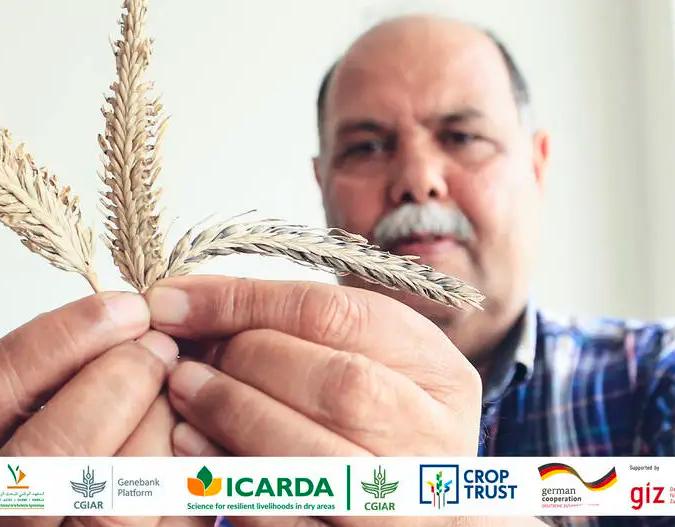
The ICARDA Morocco genebank offers the key to climate-resilient traits that can help strengthen global crops in the face of stresses such as soaring temperatures, pests, and water scarcity.
It conserves and researches an impressive collection of 95,000 accessions (groups of plant genetic resources) collected from the region, including wheat, barley, chickpea, faba bean, lentil, and forage genetic material.
This plant and seed matter are the ancestors of today’s crops that evolved in the wild, in the harsh environment of
to conserve ICARDA’s entire genetic resource collection for up to 100 years before regeneration.
It also includes new, cutting-edge technology that allows for research
water scarcity and heat.
The new genebank has been designed with cold rooms large enough
on species within strictly controlled environmental conditions, essential to identifying useful traits in crops for climate adaptation.
The facility— the third that ICARDA has established since the research center was founded in 1977— supplements ICARDA’s existing genebanks at Svalbard in Sweden and Beirut in Lebanon.
Olam Agri secures US$200
M IFC loan to boost food production ICARDA furthers aim to fortify global crops with a new genebank in Morocco
THE GENEBANK OFFERS THE KEY TO CLIMATERESILIENT TRAITS THAT CAN HELP STRENGTHEN GLOBAL CROPS AGAINST SOARING TEMPERATURES AND PESTS

Agthia has been on a deal-making spree in an effort to become the biggest food and beverage company in the region by 2025.
In May, Agthia announced expansion into Saudi Arabia with a greenfield investment worth Dh90m (US$24.5 million) that will be used to set up a manufacturing unit in the kingdom.
EGYPT — United Arab Emirates food and beverage group Agthia is poised to take a 60% stake in Egyptian snacks company
Abu Auf Holding, subject to regulatory approvals.
After completion of the deal, which is subject to regulatory conditions, the founders will hold 30% and TCV, an Egyptian private equity firm which invested in Abu Auf in 2019, will hold a 10% stake.
Abu Auf, located in New Cairo,
manufactures a range of consumer products sold via the direct-to-consumer channel and through 200 retail outlets in Egypt, and three that recently opened in the United Arab Emirates. The business supplies markets in the Middle East, Asia, Europe and the US.
Financial terms were not disclosed for the stake in the Egyptian company, which generated revenue of AED236m (US$64.2million) in the year to 31 December and EBITDA of AED58million.
USA — Do Good Foods (DGF) has announced plans to invest up to US$100 million in an animal-feed production facility near Fort Wayne International Airport in Idaho which will create up to 100 new jobs by the end of 2024.
Launched in 2021 Do Good Foods is a sustainable foods producer that uses surplus from grocery stores and farmers markets to produce nutritious animal feed.

Do Good’s mission is to reduce and ultimately eliminate food waste. Each Do Good Chicken saves approximately four pounds of surplus groceries from being thrown away, preventing approximately three pounds of greenhouse gases.
The 150,000-square-foot facility
will allow the company to divert food waste from up to 450 supermarkets and repurpose about 60,000 tons of food waste on an annual basis.
Based on the company’s job creation plans, the Indiana Economic Development Corp. (IEDC) committed an investment of up to US$1.2 million in the form of incentive-based tax credits and up to US$100,000 in conditional training grants.
Construction is expected to be complete in late 2024 and production to begin in early 2025. The facility will reduce the amount of food waste, and the associated greenhouse gas emissions, in surrounding landfills.
AGTHIA HAS BEEN ON A DEALMAKING SPREE IN AN EFFORT TO BECOME THE BIGGEST FOOD AND BEVERAGE COMPANY IN THE REGION BY 2025.
USA — REMBE, a leader in the innovation of high-quality combustible dust explosion protection safety systems, has introduced a new and improved EXKOP isolation system, a safe and effective means of isolating enclosures.
The REMBE EXKOP is available for more applications, including ST2 dusts and features reduced explosion pressures of up to 2 bar and larger diameters. The upgraded controllers allow for flexibility as process requirements change.
Isolation is required per NFPA (National Fire Protection Association) and is essential to protecting adjoining system components against the spread of combustible dust explosions.
Process equipment is usually connected by pipelines through which, if an explosion occurs, fire and pressure spread very rapidly. REMBE’s EXKOP isolation system, consisting of a control panel, triggering devices, and one or more quench valves, can stop this sequence of events.
In the case of an explosion, the EXKOP controller receives a trigger signal from a burst indicator on a REMBE explosion panel, an infra-red signal, or a pressure sensor.
It then activates the connected EXKOP quench valves. These close within a few milliseconds and thus protect adjacent plant components. After being triggered, the quench valves can once again be put back in operation at the touch of a button.

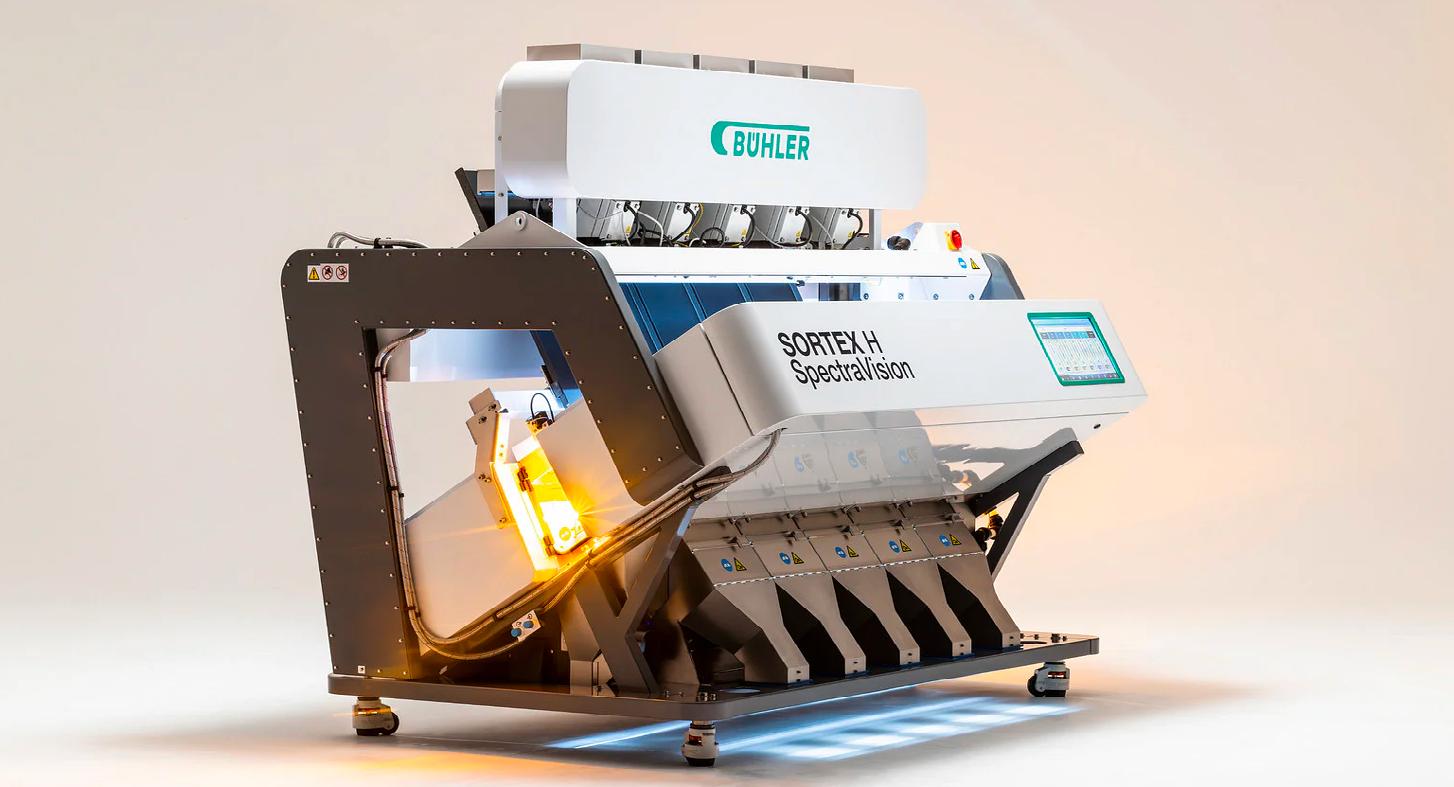
UK — Swiss food technology group Bühler Group has launched its latest optical sorter for wheat, rye, oats, grains, coffee, and pulses: the SORTEX H SpectraVision.
Using British and Swiss engineering, the sorter offers three key benefits for customers: unmatched ease of use, high performance, and enhanced connectivity contributing to increased sustainability.
The SORTEX H also delivers up to 50% higher reject concentrations. Its
enhanced connectivity increases value for processors with over 500 data points that can be downloaded every second and sent to Bühler Insights to optimize and track performance.
Processors can monitor and control their machine performance from anywhere in the world, in line with Industry 4.0 standards. Real-time tracking of sorting performance and emergency warnings are also possible thanks to the SORTEX Monitoring System.
The SORTEX H SpectraVision is available for purchase globally and has already been installed at numerous customer sites around the world, including Spain’s first oat mill, Harivenasa.
The company which specializes in producing and supplying highquality oats and other cereal-based products had a seven-module SORTEX H SpectraVision machine installed last year in its brand-new oat mill.
“We’re extremely happy with the SORTEX H because it’s very efficient, boosts our productivity, and we get much better quality now than we previously did in terms of unhusked grains, defects, black spots and so on,” said Alberto Loizate, managing director for Harivenasa-Alea.
REMBE’s upgraded EXKOP isolation system is a safe and effective means of isolating enclosures
Bühler launches latest optical sorter that cuts energy, water use by 50%
A SLIM mixer assembly with Progressive Spiral Porting creates a vacuum that draws powders directly into the high-shear zone and rapidly disperses individual solid particles into the liquid vehicle.
High-quality dispersions, suspensions and emulsions are thus produced in dramatically less time. The SLIM can also be used to introduce minor liquid components and create fine emulsions.
Its method of powder addition is said to reduce the formation of lumps, prevents floating powders, eliminates dusting and accelerates mixing time.
“The SLIM is well-proven for hardto-mix powders, including thickening agents like CMC, xanthan, guar, gum arabic, carrageenan, alginates, pectin and starches,” said Christine Banaszek, sales manager, Charles Ross & Son Co.
Additionally, it enables a cleaner and more operator-friendly method of raw material addition, minimizing dusting in the plant atmosphere.
To raise and lower the High Shear Mixer in and out of the mix vessel, the company offers a floor-mounted design equipped with an air/oil hydraulic lift. Safety limit switches prevent operation
USA — Charles Ross & Son Co. has debuted new Batch High Shear Mixers equipped with Solids/Liquid Injection Manifold (SLIM) technology that deliver powders in an efficient manner for instant wet-out and complete dispersion into low-viscosity liquids.

“In conventional mixing systems, such challenging powders are added very slowly into an agitated batch — prolonged mixing is often necessary to ensure complete dissolution or dispersion.
The SLIM offers a much simpler method: rapid addition of powders without subsequent agglomeration,” Banaszek added.
of the mixer while in a raised position or without a mix vessel in place.
SWEDEN — Swedish agritech company BoMill AB has introduced BoMill InSight, an industrial grain sorting equipment that can sort grain lots kernel by kernel, at speeds up to 15 tph on each kernel’s internal properties.

Based on BoMill’s proven quality sorting technology using Near-Infrared Transmittance (NIR-T) spectroscopy, BoMill InSightTM is built on a brandnew technological platform developed with versatility and low total cost of ownership in mind.
It can also analyze about 125 000
kernels per second, responding to highly demanding industrial standards.
The BoMill InSight brand illustrates the unique ability of the equipment to uncover what cannot be seen, by looking inside each single kernel and sorting each individual kernel according to its internal quality parameters, at industrial speed.
Its modular design, composed of a light and sturdy frame with up to eight sorting modules, allows an efficient set-up and installation to suit different configurations, low utility consumptions, simplified maintenance to maximize customers’ uptime and an upgradable capacity to suit customers’ future needs.
USA — Reading Bakery Systems (RBS) has introduced a flexible, reliable, and more efficient system to make pita chips and a variety of other baked crisp products.
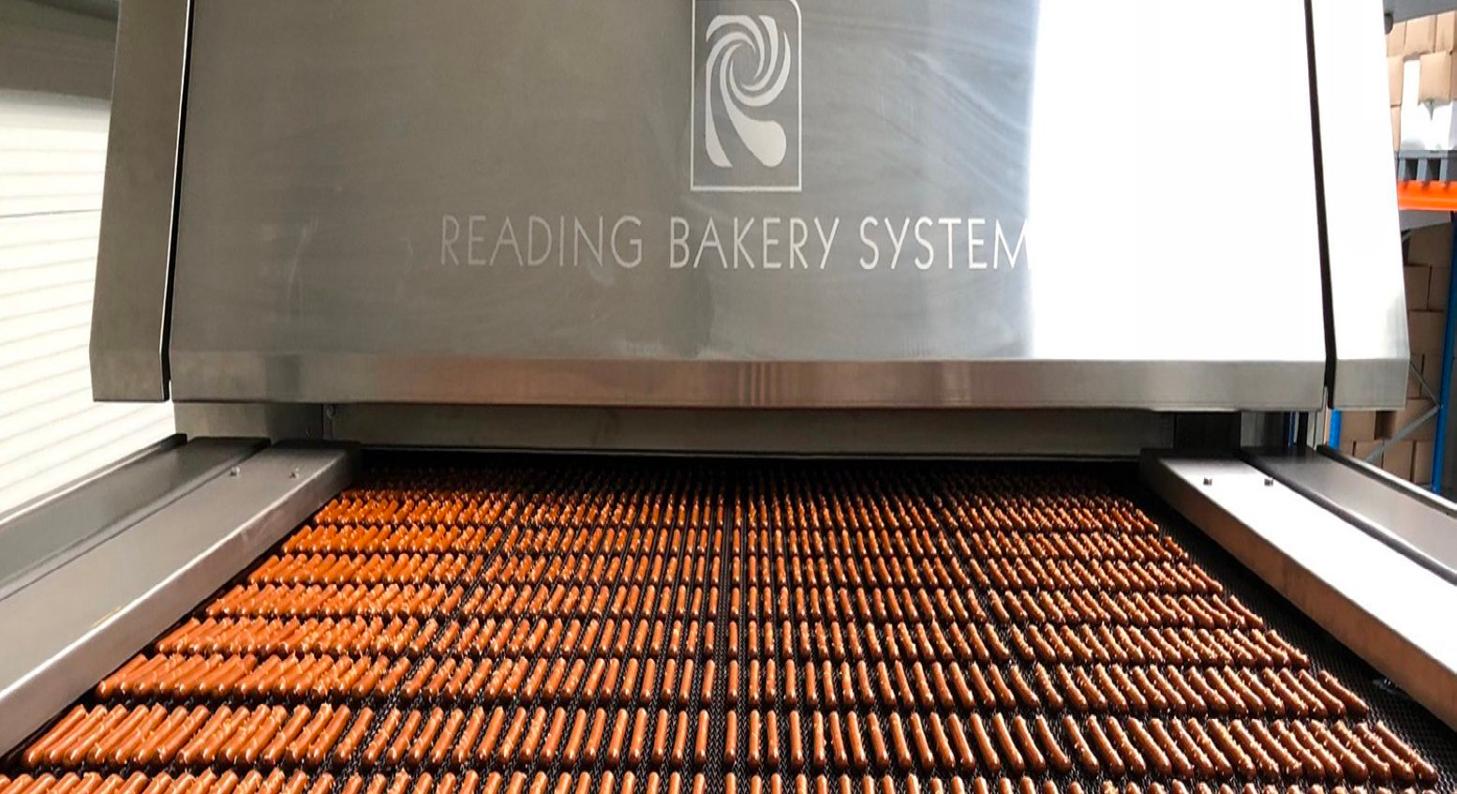
With a growing trend for healthconscious eating, product innovation relies on flexible equipment to perfect bakery products.
The new innovation adds to its portfolio of Healthy Baked Snack Systems, making pita chips that offers
snack manufacturers flexibility.
According to RBS, the new fully automated pita chip production system builds on the RBS Multi Crisp Technology with an additional multi pass proofer, pita dicer and a high heat application during the baking process.
In addition to Thomas L. Green sheeting equipment, the new system also incorporates a convection oven and dryer.
These, together with the multi-pass proofer, create an efficient solution that
delivers consistent quality within a relatively small space.
Beyond pita chips, this line can also produce other multi-crisp snacks by bypassing the proofer and pita slicing steps. The System is modular with a capacity of up to 1,000kg/hr depending on the number of oven zones.
The standard system includes a 3-Roll Sheeter, Gauge Roll, Optional Rippled Gauge Roll, Rotary Cutting Station, and Spectrum Oven and Dryer System.
offers enhanced quantitative analysis of peanut residue.

The Veratox for Peanut Allergen test is a sandwich enzyme-linked immunosorbent assay (S-ELISA) that is validated to detect three primary allergenic proteins in peanuts (Ara h 1, Ara h 2, and Ara h 3).
The new Veratox VIP for Peanut assay is very sensitive and able to detect low levels of peanut protein while remaining fast and easy to use,” said John Adent, Neogen’s President and CEO.
USA — Neogen Corporation has announced the release of Veratox VIP (Veratox Improvement Platform) for Peanut assay, an enhanced version of the Veratox for Peanut allergen test, which
This innovative quantitative test features an optimized antibody combination and extraction procedure for high specificity to all types of peanut protein, particularly further-processed peanut.
“It was very important that we offer a solution that gives producers confidence as they navigate this changing landscape.
The test optimizes sensitivity and flexibility across sample types while maintaining the rapid time-to-result and simple testing procedure standards set by the Veratox product line.
This product has been validated in a wide variety of product types, including both minimally and further-processed products. This flexibility makes the assay appropriate across different food manufacturing and laboratory environments.

Using



Founded in 2019, Böna Factory is an Africa-focused food startup burning with ambition to solve the continent’s food security problems. Before Böna, attempts have been made towards solving Africa’s food security crisis. In fact, billions of dollars have been pumped into development programs aimed at unlocking Africa’s food potential as the world’s grain basket. Although noble in motive, these development programs have not achieved much, years after they were first initiated.

As recent as 2020, more than one in five
people in Africa faced hunger—more than double the proportion of hungry people in any other region, according to report by Brooking’s Education. Böna’s seeks to change this narrative by tapping underutilized plants and crops to create nutritious meals for consumers from all walks of life.
Having been in the Africa food industry scene for more than 10 years, Sara Ahlberg, Founder and CEO of Böna Factory, simply found food security development programs to be a repetition of the same without any meaningful results. “While Europe is taking huge leaps in future food technology and science, we in Kenya still put millions on projects thinking how to store maize in a hermetic bag and how to sell cash crops to the European food industry,” Ahlberg tells Food Business Africa Magazine.
Frustrated with the lack of results, Ahlberg tried in vain to convince old employers and some international companies to focus on African markets. “The only solution was to start something which is right to do,” she says. The desire to do the right thing gave birth to Böna Factory. “This is not just something we try out for a sake of being in a start-up scene, this is something we can truly build and create something new,” a confident Sara says.
Sara reveals to us that her company is focusing on plant-based foods, given their proven potential to sustainably feed the world population. Plant-based foods are already a market sensation in Europe and North America where consumer concern for the environment and need to guarantee future food supplies is driving demand. A report by Bloomberg Intelligence even predicts that the plant-based market will undergo explosive growth in the next 10 years and could make up to 7.7% of the global protein market by 2030, with a value of over US$162 billion, up from US$29.4 billion in 2020.
Settling on plant based and gluten free innovations was therefore a no brainer for Sara. This is the future of the food industry and therefore the perfect solution to Africa’s food problems. Sara describes the shift to plants as a “plantastic fantastic revolution.” To have the greatest impact, Sara and her team at Böna are targeting customers from all walks of life. “We
are not focusing on niche specialty category of vegan and gluten free foods but streamlining new innovative options for all the consumers.”
Being based in Kenya, Böna Factory is out to offer its customers meals that they know, love, and enjoy but with what Sara describes as a Böna twist to make them even more exciting.
The company’s flagship product is known as Bö Pasta, a (dry) high-protein and high-fibre plant-based gluten free meal that has yellow grams and cassava as the main ingredients. Several variants of these products exist in the market with spirulina, greens, beetroot, chili, baobab, moringa, and lemon used interchangeably to bring out exciting flavors. The use of a diverse range of ingredients makes it easier for consumers to have more nutritious meals easily, diversifies their diets and helps them get a wider range of nutrients from one source, according to Sara. Although unique in both formulation and taste, Bö Pasta is already creating a buzz in Kenya’s food industry with over 5,000 packs already served to both first and repeat customers.

Bringing food to more Kenyan homes has been the target from the start and the company is already exploring other local meal options that Kenyans already know, love and enjoy. Under the company’s Hakuna Matata Series the company is planning to roll out ready-toeat meals for busy and urban consumers who don’t want to spend their time cooking. “We
start with githeri, with a Böna twist, ugali and greens, and peanut plantain with rice,” Sara reveals. “All these are amazing traditional plant based, naturally vegan and gluten free foods from Kenya, but of course with our Böna twist.” With the Hakuna Matata series Sara also hopes to enhance access to healthy and nutrition meals in addition to providing meal options that Kenyans will consider rather than going to burgers, pizzas and chicken wings.
Böna stands out from peers for its mission to have a lasting positive impact on the food system. For this reason, Sara and her team have made Research and Development a key pilar of the business. “Research and development are most crucial for Böna; we are driving for new innovations for consumer convenience from neglected crops and plants,” She says. According
to the Böna CEO, Africa has thousands of underutilized plants and crops, but our food systems have pushed few crops (maize, wheat, sugar, rice and soy) to even 80 % of products. Through R&D, the company is tapping into these rarely used crops to provide new options, mainstreamed in availability, accessibility, usage and pricing. So far, the company has managed to use plants such as baobab, moringa, spirulina to bring out quite interesting food profiles. “This makes it easier for consumers to have more nutritious meals easily, diversify their diets and get wider range of nutrients from one source,” Sara explains.
Work in this department is certainly not slowing down any time soon as Böna has ambitious plans for tomorrow. “In the future, we will launch our plant-based milks, designed now especially for the local consumer taste and usage, and our main target is in “plant-based protein products” or “the meat alternatives”,” Sara reveals. “For these, several steps need to be done, but we can assure, these will be amazing and change a lot in the industry!”
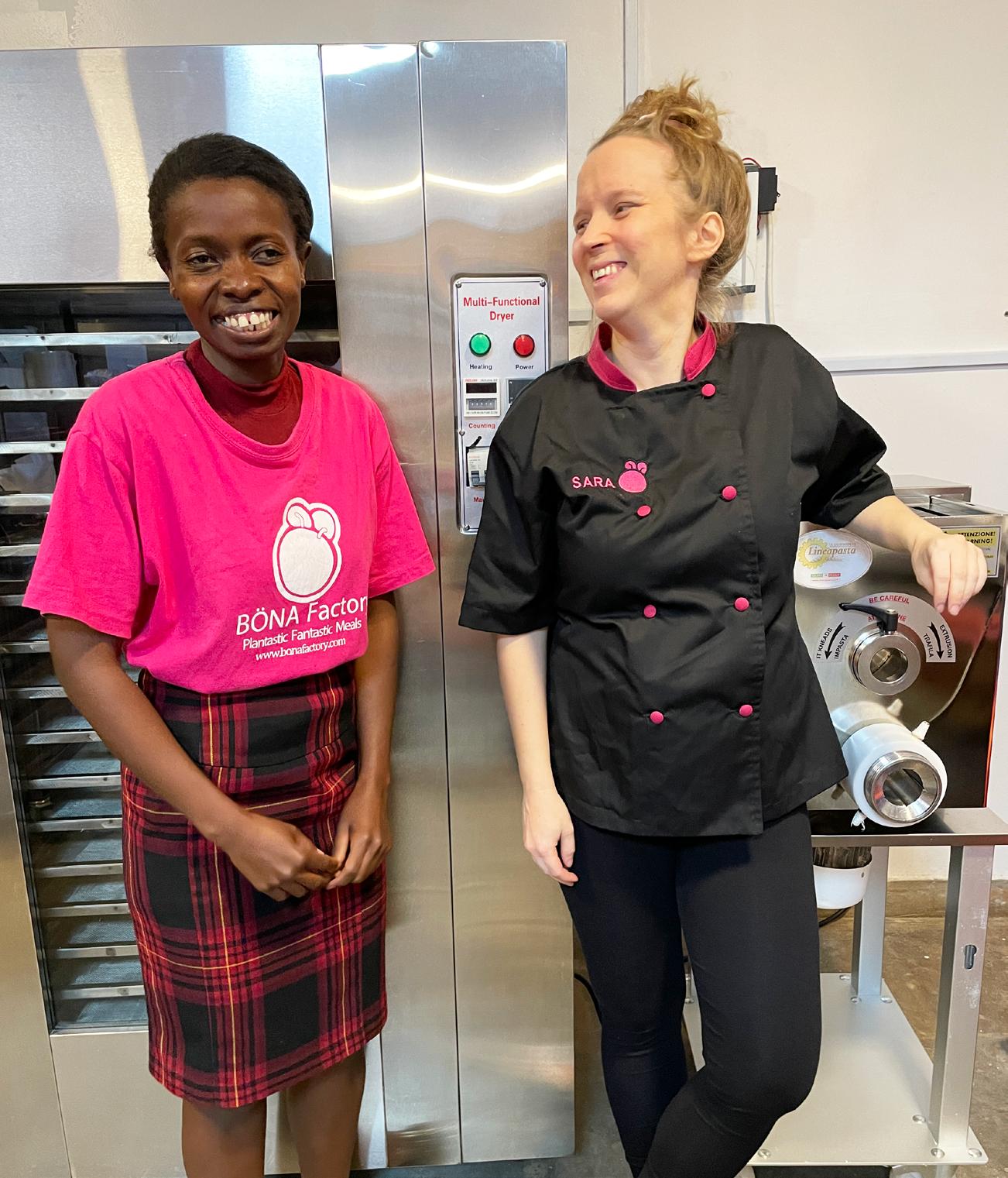
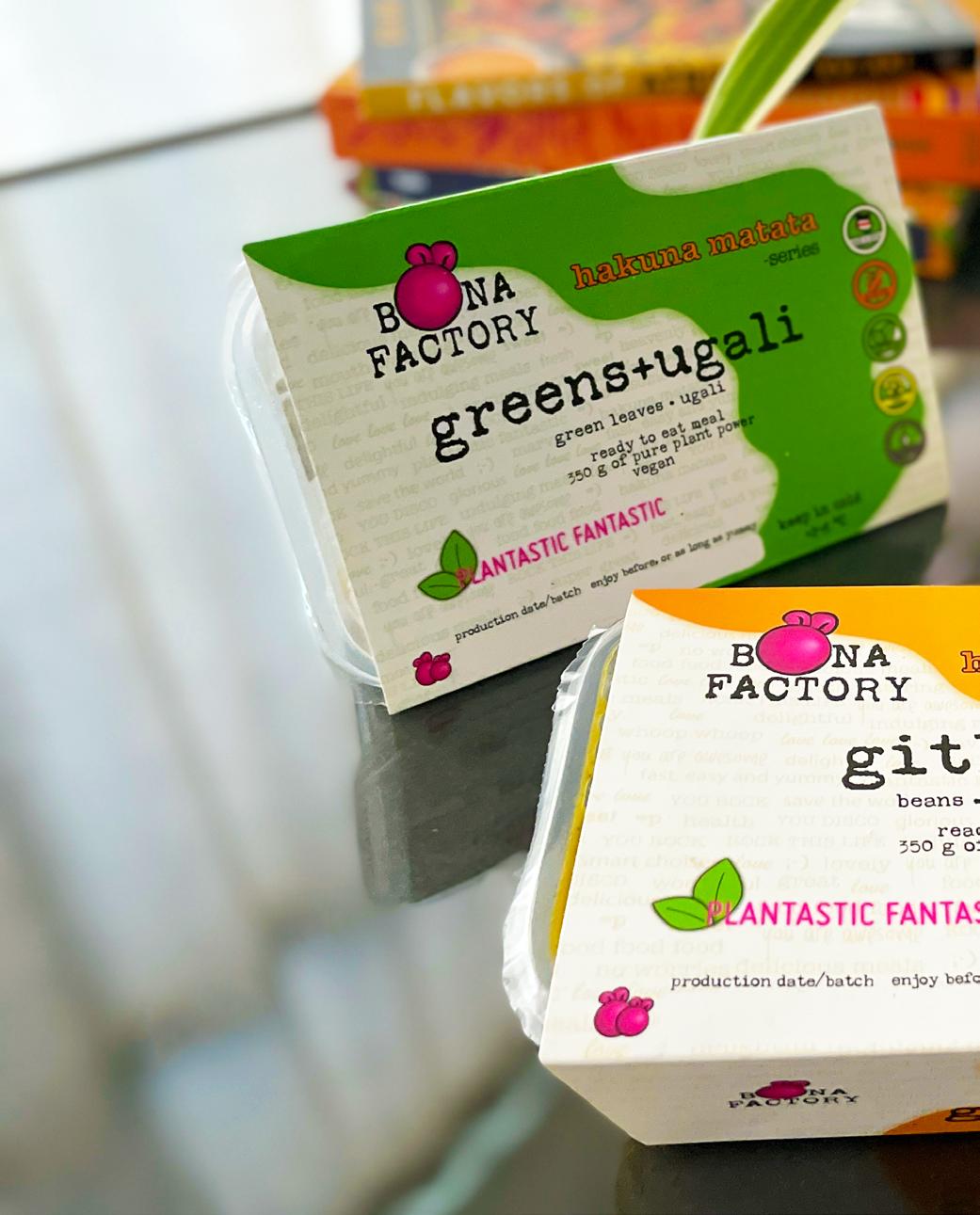
Globally animal based foods are responsible for over 30 % of the greenhouse emissions and are also significant drivers of deforestation and water pollution. Operating in the more environmentally friendly plant-based market
therefore puts Böna a step ahead when it comes to sustainability.
“Sustainability is inbuilt in all our operations,” Sara boasts. The company, according to Sara, focuses on plant-based innovations from crops and plants that are largely climate smart, drought resistant and adapted naturally to the ambient conditions. This reduces the need to invest in further practices such as fertilizer and irrigation which can also have an impact on the environment. When it comes to innovation, Sara reveals that Böna focuses on products where it can provide a better alternative for animal-based products. “Also, these products are combined from different ingredients to ensure better biodiversity through seasonal availability, regional differences and avoid increasing monocropping systems,” she adds.

“Food waste is also a huge food security and economic loss in Africa, partly because of lack of processing capacity,” Sara points out. Through R&D, Böna is working to tackle this challenge by providing food products that are packed with modified atmosphere (MAP), extending the shelf-life of the meals significantly up to two weeks.
Beyond the factory, Böna is working to build solid partnerships with local and regional farming communities for value addition and
better livelihoods. This is however a work in progress. “At the moment, we are still forced to buy through middlemen and traders, which is increasing our purchasing prices, but also decreases traceability and quality unfortunately,” Sara reveals. “Let’s take an example of our pasta – it’s impossible to get grinding quality we would require for us to ensure high-quality products, which now impacts our product quality directly.” By working with farmers directly, Sara hopes Böna will help farming communities transition to highly productive modern farming systems. “This is how we can create value at the source level, and Böna can focus on the consumer product processing.”

Back at the factory, the company is also looking after the welfare of its workers so they can sustainably manage their lives. “This means good employment, good salaries, and workfree time balance,” Sara explains. “Also, for employees, we are looking to provide day care for children to providing basic health care and legal services for our employees as these are taking a lot of time and resources for people.”
Böna has been commercial only from end of 2021 but has been there since 2019. The journey has been long but Sara is proud of what she has been able to achieve thus far achieve. “Starting
a business as a foreigner in Kenya was a first huge step which needs to be acknowledged,” Sara boasts. The journey was not easy as Kenya, unlike Europe lacked the necessary infrastructure to support a food startup with goals as ambitious as the one Sara envisioned for Böna. If Böna was to start in Europe, all Sara needed to do is to tap into existing food hubs for her products R&D and then transfer production to contract manufacturing which is also available in enough capacities. Sadly, in Kenya, “there are no contract manufacturing possibilities,” Sara points outs.
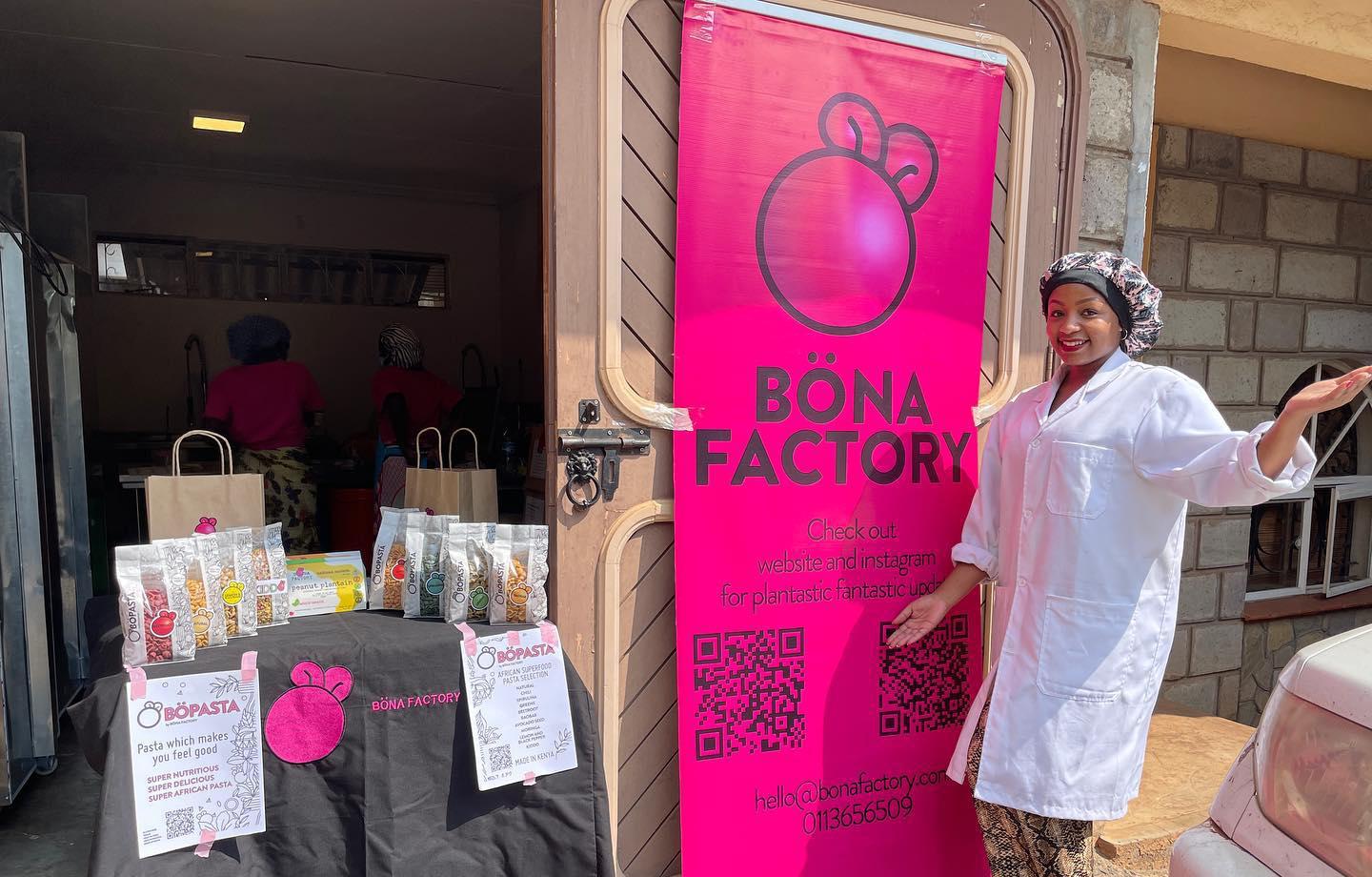
This made it difficult for her to affordably innovate and develop new products. Even putting up the first R&D stage facility up and running took a while but Sara was unflinching in her resolve to be part of the solution to Africa’s food security problem. Teaming up with other partners and directors, she pulled together resources that were enough to get the company from the ground. Böna also received funding from EU Horizon2020 program for food safety research and product development. “This has allowed us to focus on innovation, and to trial what’s possible to do with the ingredients on
hand.”
Getting products to market has also not been easy for Böna given its unique product offering. “Launching new products has been challenging in terms of not meeting the standards as such, and fitting those categories has been a bit weird,” Sara explains. “How to name a new product in a category which doesn’t necessary exist yet? We have not been able to figure it out yet.” How to reach large consumer groups in informal sector has also been a million-dollar question for the Nairobi based startup. “At the moment we are going through the urban shops, online stores and major supermarket chains in Kenya,” she reveals. These channels although satisfactory for now, Sara knows that they may not serve them full in the future, but she has a plan when that need arises. “We are looking for direct delivery systems especially when we have more product options.”
Böna’s target from day one has been the large consumer groups, low-income and mid-income mass markets. “At the moment, we can’t reach them as our capacities are too small, but we
THE START-UP LACKED THE NECESSARY INFRASTRUCTURE TO START OFF BUT THE AMBITION OF THE TEAM HAS PAID OFF
are building towards that,” Sara reveals. “Solid product development processes have been done, and we have learned from the sourcing to markets and consumers and updated the plan to provide better products.” With the progress made so far, Sara is confident that Böna is ready to enter the next step in its growth plan. This will however require an investment of 600,000€, according to the CEO. The funds will be particularly useful in getting Böna the technology, machinery, and infrastructure required to run the production at a level that will push more Böna products to the market. Sara cannot wait for this next step to happen. “With smart choices, deep industry knowledge and good planning we can definitely create something robust, flexible and suitable for our current and even more, future needs.”
Kenya has seen food startups launch and fold a few months or years down the line. Sara is however committed to her course to see Africa’s food industry transformed. “I am a food industry professional; this is not just something we try out for a sake of being in a start-up scene, this is something we can truly impact and create something new,” she says. Her long-term vision for the company is however to have it taken under the fold of investors with necessary capital and expertise to expand its reach and impact. “I would see that the business would
be ready to be sold for right investors certain targets have been achieved,” she admits. What she and her team will be looking for when that time comes is an investor that shares Böna vision of contributing to Africa’s food security. “We need to keep in mind, we have very unfortunate examples globally how old, traditional, simply wrong investors are buying out new businesses, but are lacking the deep vision, creativity, desire, and even organizational flexibility to create and sustain change at the level original founders saw it required,” Sara explains. “Many have failed because of this, and I will not want this to happen with Böna.” But first things first, Sara and her team are working to achieve the company’s short-term goals. “We need to ensure we have built our own cuttingedge, example leading manufacturing plant to lead the way for new food industry, and, we have strong academic relationships to region’s educational institutions to ensure high-tech learning, innovation, and creation processes.”
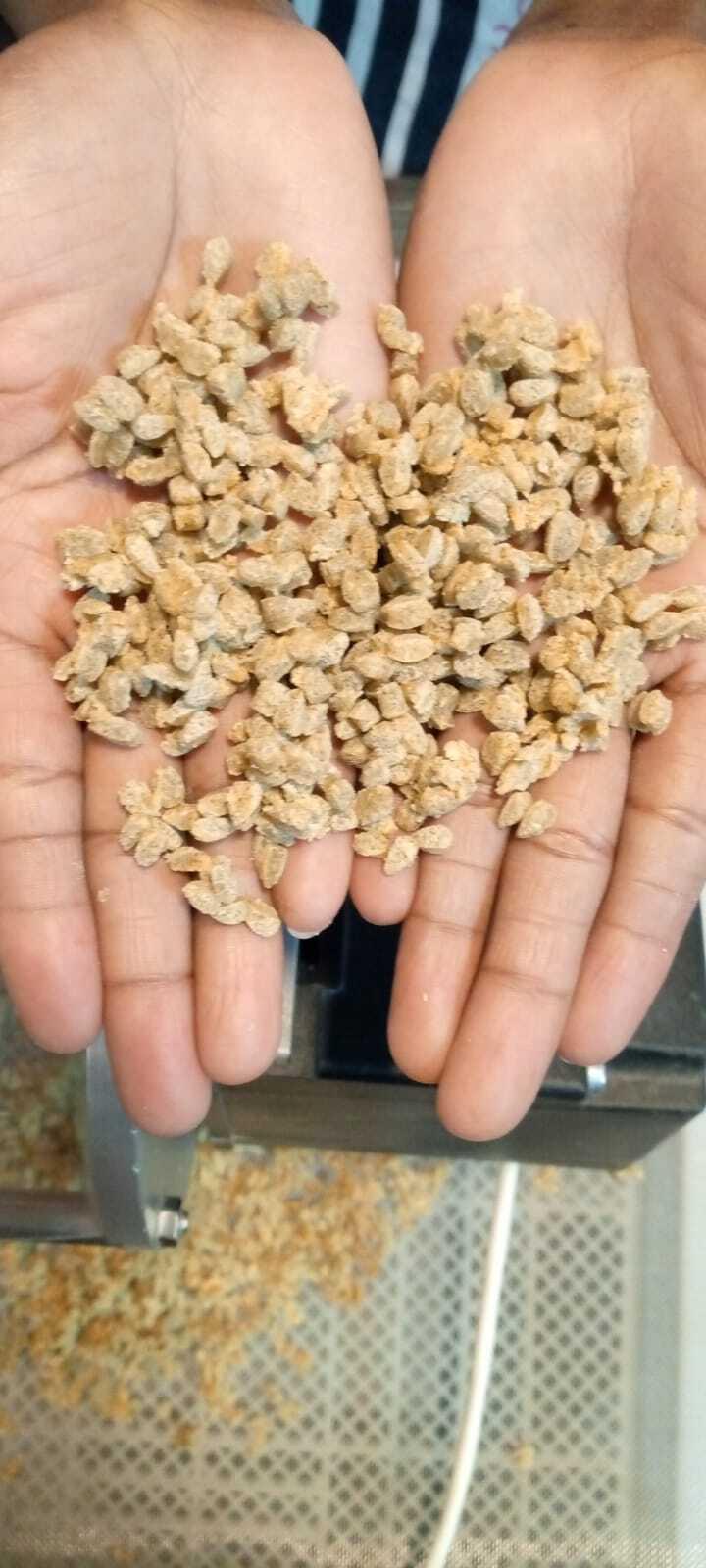
SOLID PRODUCT DEVELOPMENT PROCESSES HAVE BEEN DONE, AND WE HAVE LEARNED FROM THE SOURCING TO MARKETS AND CONSUMERS AND UPDATED THE PLAN TO PROVIDE BETTER PRODUCTS.

Provide a brief profile of Bühler’s operations in Nigeria and West Africa
Bühler operates from four different locations in West Africa and Central Africa to be closest to the market and customers: Abidjan, Ivory Coast (sub-regional headquarters); Lagos, Nigeria; Kano, Nigeria and Douala, Cameroon.
In Abidjan, we have a Management, Customer Relation and Customer Service Team with about 14 people covering West and Central Africa, as well as the CICC (Cocoa Innovation and Competence Center). The CICC is a fullyfledged cocoa processing plant on lab-scale, which our customers and partners can use for recipe, process, and product development as well as training with their and our experts.
In Lagos, we are present with a team of 25 people. We offer support in project conceptualization, technical consulting, project management, installation, and commissioning as well as prompt and reliable after sales services. We have just moved into a brand new office – feel free to visit us any time.
In Kano, we have a Sales and Customer Service Team with 4 people. We believe in the North of Nigeria to be the market of the future. We are currently building the Grain Processing Innovation Center (GPIC) in Kano –a fully fletched application mill for whole-grain products. Upon completion in Q1 2023, we will be able to support the Nigerian agribusiness and milling industry to successfully master the transition from a predominately wheat-importoriented industry to a diverse one, utilizing various local grains, which are produced and processed in Nigeria itself.
This will help Nigeria to gain food independence, improve food security and reduce the forex-burden that wheat importation generates. The GPIC will also become our Center of Competence for local grain milling with a sophisticated technology setup. We will use also use the facility to conduct trainings to improve the skill level available in Nigeria.
We started building up a Team based in Douala, Cameroon, which will cover the Central African Region.
What is the role of bühler in facilitating the growth of the food and milling industry in Nigeria?
We are heavily investing in our setup in Nigeria to facilitate the growth of the Nigerian agroand food processing industry through an holistic support approach covering support in conceptualization, business modelling, technology supply and financing solutions: Bühler is a one shop one stop solution provider.
What solutions does Bühler provide to the key sectors of the economy in west Africa?
A: Milling, grains, noodles, pasta and animal feed - Bühler provides full industrial solutions for grain and oilseed handling and milling including grain handling (cleaning, drying, storage, ship- loading and unloading) as well as milling and bulk/big pack/10-50kg bagging.
Commodities that we cover include but are not limited to wheat, rye, maize, oats, sorghum/ millets, pulses, teff/fonio, soya, rapeseed and sunflower.
Further, Bühler provides pasta plants for durum/wheat and gluten-free / local grain pasta as well as instant noodle lines (Asian Noodles). We also provide industrial solutions for animal and aqua feed plants.
B: Cocoa, chocolate and confectionery - Bühler offers industrial solutions for cocoa processing (from cleaning till pressing) as well as full chocolate, compound and spread processing solutions (chocolate mass till moulding). We also provide solutions for sugar grinding, nut grinding (nut butter) as well as various confectionary products (creams, marshmallow, cereal/snack/nut/protein bars).
C: Snacks and baked goods such as biscuitsBühler took over the Austrian company Haas, market leader in wafer and biscuit processing in 2016. Now Bühler is providing full solutions from grain intake till finished value-added product (e.g. wafer or biscuit). This allows us to support our customer taking advantage of the circular economy: Increasing profits while
reducing CO2e emissions: e.g. food parks, downstream integration.
Bühler also offers solutions for extruded snacks (e.g. chin-chin, cheese balls, etc.) and breakfast cereals (corn flakes, extruded products such as wheat pillows, choco shells, rice crispies, loops, etc).
What are the opportunities for the food industry in west Africa to adopt new technologies such as digitalization? What are the challenges ?
Opportunities: Vast and rich arable land, young work force, increasing wheat prices due to the war in Ukraine – this demands demand for sustainable local starch and protein sources.
Challenges: Access to finance, unstable political climate, security issues and inefficient supply chains.
What are the opportunities to incorporate sustainability in the food industry in West Africa?

Sustainability is becoming increasingly important not only in developed but also emerging markets.
The supply chain disruptions triggered by the Covid-19 and Ukraine crisis have shown that countries have to become more self-sufficient in terms of food supplies: Prices for energy and logistics are soaring, wheat availability is at stake and power supplies are inconsistent.
Bühler can support customers in leveraging
circular economy dynamics to add value to side-streams and by-products (e.g. from bran to animal and aqua feed or biscuits/wafers/baked products with nutritional benefits), add further value to intermediate products (e.g. from flour to biscuit/wafer) and use husks and shells to generate energy (bio-combustion).
We have executed several food park projects around the world (including Egypt and Angola), which can be multiplied in various geographies. Also, on a smaller scale, we have helped customers to turn their low-value by-products into added-value products.
What are Bühler’s future plans in Nigeria & West Africa?
We will support countries, governments, customers and partners with 360° support from conceptualization over business planning, financing, technology, training and after-sales support out of our knowledge hubs in Lagos, Douala and Abidjan.
For this, Bühler has already invested substantially into our infrastructure (CICC, Abidjan) and is continuing to do so (GPIC, Kano). In parallel Bühler, is building up capacities and capabilities within the region. We are expected to grow to a team size of about 100 by 2025. This will allow us to respond faster to our customers’ needs while we follow the credo: In the region, for the region.
Not many African countries are as well-endowed as Uganda, especially in Eastern Africa, where countries such as Kenya, Somalia, Rwanda, Burundi, Southern Sudan and even Ethiopia are reliant on significant and rising food imports to meet their surging needs for basic food products. Only Tanzania has the potential and capability to match and surpass Uganda, with both countries still at their infancy in developing vibrant agricultural sectors that
can tap into their rich potential in fertile soils, vast land resources and abundant rainfall.
Uganda is a significant producer of important commodities in the region, and whose demand keep on rising, either regionally or internationally: maize, rice, sorghum, cassava, millet, tea, coffee and a number of oilseeds such as soybean, groundnuts and sunflower. The country is also a leading producer of bananas.

While coffee and tea are traditional cash crops grown mainly for export, Uganda’s maize, beans, ground nuts, and rice crops are the
By Francis Jumaprimary agricultural commodities that are consumed locally and traded within the East African Community (EAC) and COMESA region.
According to the government of Uganda, Uganda has a comparative advantage in the region for its grain production and is considered to be the food basket of the region, with more than 2.5 million households deriving their income and employment from the grains sector in Uganda.
It also adds that grains are important commodities of socio-economic and political importance in the country. With one of the fastest growing and youngest populations in Africa and rapid urbanization, the demand for grain as food for consumption, ingredients for manufacturing animal feed and to serve the growing regional trade is bound to increase substantially as the country approaches 2030 – laying the foundation for Uganda to urgently seek new ways to increase production on the farm, reduce food losses and streamline vital grains supply chain infrastructure.
The quest for Uganda to take advantage of the rising opportunities, is however, hampered by a number of challenges, including inadequate supply due to low production and productivity, volatility of agricultural commodity prices, inadequate storage facilitates and minimum value addition.
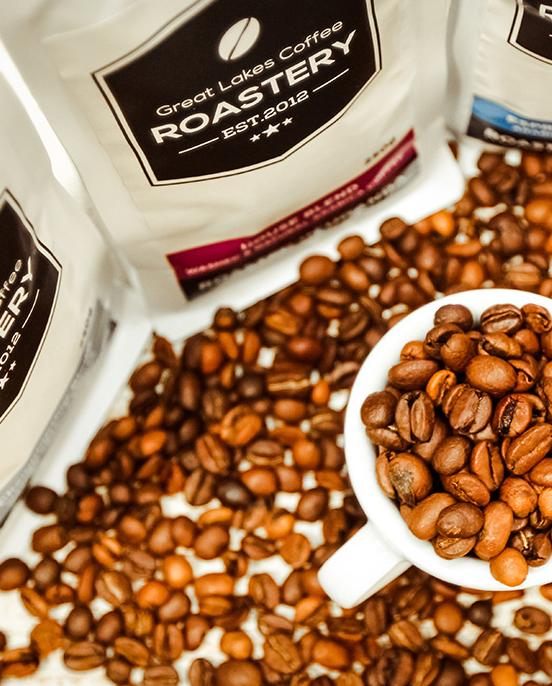
There is urgent need for policies and strategies to increase production and productivity; address post-harvest management challenges and promote value addition to ensure competitive supply of quality grain and grain products, adds the government in its National Grain Trade
Policy, which is being implemented in 2018-22, and outlines the strategic policy actions that will transform the grain sector to ensure sustainable and accelerated growth in grain production, quality storage, value addition and trade volumes.
According to the Policy, the shortage of standardized storage facilities, unreliable electric power supply and high costs, as well as high interest rates for financing among other issues, pose serious challenges to the sector.
In terms of storage, the country lacks governmentowned storage facilities, thereby relying on private sector investments by the members of the Uganda Grain Traders Association who have constructed some storage and processing facilities. The national standardized storage facilities for maize only caters for only 12% or 550,000 MT out of 3.2 million MT of total production, hampering the significant trade with some organizations like the World Food Program (WFP), and other trade with regional countries such as Kenya, South Sudan and Rwanda.
Uganda has made some noticeable strides in the production of key commodities over the past few decades, with some exceptions.
Maize, which has increasingly become the country’s staple after the banana crop, has seen its contribution rise significantly over the last 20 years, with production rising from 800,000 MT in 2000 to a peak of 3.442 million MT in 2018, later dropping to below 3 million MT in subsequent years, with a forecast of 2.8 million MT in 2022, as per FAO
region.
The country’s maize consumption has kept pace with its production, rising from 776,000 MT in 2000, to 2.2 million MT in 2010, hitting 2.7 million MT in 2022, hence leaving minimal volumes available for regional trade – meaning that the recent stagnation in production volumes after hitting the highs of 2018 leaves Uganda with little to take advantage of rising regional demand.

Rice, another important crop, increased from 71,000 MT in 2000 to a peak of 154,000 MT in 2014, before slipping to a projected 137,000 MT in 2022. In terms of consumption, the country’s domestic consumption has nearly doubled since 2000, from 120,000 MT to 236,000 MT in 2019 and a projected 197,000 MT in 2022. Wheat consumption, which still lags behind other Eastern African giants like Kenya, Ethiopia and Tanzania has seen significant increases from 131,000 MT in 2010 to a high of 560,000 MT in 2020 and is expected to fall to 475,000 MT in 2020.
Uganda has made some of the most astonishing achievements in coffee production, as former regional giant Kenya lags far behind, as it threatens to dislodge Ethiopia as Africa’s largest coffee producer. Hitting an eye-watering 6 million-60 kg bags in 2021, Uganda is on a roll, as a focus on new Robusta variety plantations, favourable weather and government support has seen the country double its production from a low of 3 million bags recorded in 2012.
The rapid growth in production has been largely attributed to the Government of Uganda-supported Coffee
Roadmap program which launched in 2017 that aims to increase coffee production to 20 million bags and triple the incomes of farmers by 2030. The program supports coffee production through the introduction of new coffee varieties, increasing use of inputs, distribution of seedlings, and improved extension services. Under the program, Uganda
The country is also a significant producer of several key commodities such as sorghum, millet and groundnuts, although production has tapered off from the highs of the 2000s in the three crops. Soybean, a vital commodity as the region seeks nutritious and affordable sources of protein,
has dropped from a high of about 160,000 MT in the 2000s to 75,000 MT in 2021, while sorghum production has also decreased from 420,000 MT to 250,000 MT while millet has seen a drop from 600,000 MT to 240,000 MT in 2022.
Apart from the above commodities, Uganda is also a sizeable producer of cassava (4.2 million MT), cocoa beans (35,000 MT), groundnuts (336,000 MT), sesame seed (146,000 MT) and sunflower seed (275,000 MT), according to FAO figures.
With a population of 48.5 million currently, and projected to hit 105 million by 2050, Uganda’s young population, with a median age of 15 years, is one of the youngest in the World.
The country’s rapid urbanization rate of 4.5% per annum is projected to increase in the coming decades, with the majority of its population expected to residing in urban areas, from the current 30%, aided by the country’s growing economy, connections with regional economies that will boost regional trade and the exploitation of both mineral and agricultural resources, according to the World Bank.
With the country’s coffee production on an upward trajectory, the government has prioritized local value addition of its coffee
crop within the country, even as the country continues to break production and export records. With 2020/21 exports increasing 10 percent year-on-year to 5.9 million bags with the bulk of the exports going into the European Union, United States, Morocco, India, Russia, and Serbia, the government, through its recently passed National Coffee Policy which is being implemented by the Uganda Coffee
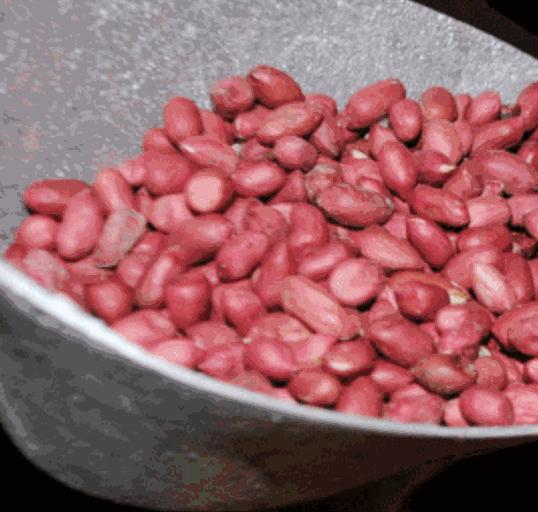
Development Authority (UCDA), the pressure is on to boost local processing and consumption, which has been hit by the Covid-19 restrictions in the country, falling by half to less than 100,000 bags, well below the pre-pandemic numbers, according to the USDA.
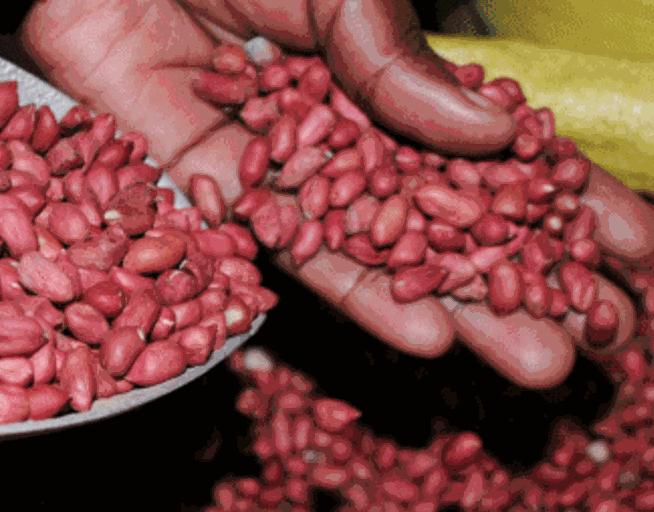
Some of the main coffee processors in Uganda include Kyagulanyi Coffee, Great Lakes Coffee, Ugacof/Sucafina among others. The latest twist to the local processing drive in Uganda is Uganda Vinci Coffee Ltd, an Italian-led coffee processing company that has been given the go-ahead to construct the country’s biggest coffee processing plant in Kampala. With plans to originally process 27,000 tonnes per year, and which would rise to 60,000 MT per year, the venture that has run into headwinds with legislators opposing the deal signed between the company and the government.
In the grains milling side, the country has recently seen some significant investments in wheat and maize milling by a number of players, adding extra capacity and much needed sophistication in the sector to meet rising demand for nutritious, safe and better packaged products. Some of the recent investments include that by Mandela Millers, with 300 MT per day wheat mill and a 48 MT per day of maize milling plant. Another recent investment in the sector was by Master Grain Millers based in the second city of Jinja, which was a 300 MT per day wheat plant. Other significant players are Pembe Flour Mills and Eengano Millers.
However, Uganda’s grains milling sector is still in the control of tens of small-scale millers, which are increasingly visible at urban centres across the country, to meet the rising demand for maize meal and rice. In the rural areas, the ageold posho mills provides some respite to consumers moving from a meal largely made up of bananas and local produce to consumers taking up maize consumption. Some of the medium-scale millers include Grainpulse Limited, Aponye (Uganda) Limited, Afro-Kai Limited, Maganjo Grain Millers
Limited and Arise and Shine Maize Millers Limited. In the rice sector, one of the largest rice growing and processing plants in East Africa, the Kibimba Rice factory, which packages the popular Tilda rice, has been in operation for nearly 20 years.
On the animal feed side, Kenya-based Unga Group’s business Unga Millers closed its loss-making maize milling plant in the country in 2017 but has made an announcement of bouncing back through a joint venture with Nutreco. The new joint venture Tunga Nutrition Uganda will make use of Unga Millers’ dormant flour mill in Kampala, converting it into a state-of-the-art feed mill to produce animal feeds and concentrates. HRM-Rainbow, the integrated poultry player, also has one of the most advanced feed mill operations in Uganda.
Location: East-Central Africa, west of Kenya, east of the Democratic Republic of the Congo
Geographical note: landlocked; fertile, well-watered country with many lakes and rivers; Lake Victoria, the world’s largest tropical lake and the second largest fresh water lake, is shared among three countries: Kenya, Tanzania, and Uganda
Border countries (5): Democratic Republic of the Congo 877 km; Kenya 814 km; Rwanda 172 km; South Sudan 475 km; Tanzania 391 km
Total Area: total: 241,038 sq km; land: 197,100 sq km; water: 43,938 sq km

Climate: tropical; generally rainy with two dry seasons (December to February, June to August); semiarid in northeast
Land use: agricultural land: 71.2%; arable land: 34.3% (2018 est.); permanent crops: 11.3%; permanent pasture: 25.6%. Forest: 14.5%. Other: 14.3% (2018 est.)
Population projection: 2030 – 59.4 million; 2040 – 74.5 million; 2050: 89.5 million; 2060: 103.5 million
Population Growth: 3.27% (2022 est.)
Demographic profile: Uganda has one of the youngest and most rapidly growing populations in the world; its total fertility rate is among the world’s highest at close to 5.5 children per woman.
Population distribution: Population density is relatively high in comparison to other African nations; most of the population is concentrated in the central and southern parts of the country, particularly along the shores of Lake Victoria and Lake Albert; the northeast is least populated.
Age Structure: 0-14 years: 48.21%; 15-24 years: 20.25%; 25-54 years: 26.24%; 55-64 years: 2.91%; 65 years and over: 2.38%
Median age: total: 15.7 years; male: 14.9 years; female: 16.5 years (2020 est.)
Birth Rate: 40.94 births/1,000 population (2022 est.)
Death Rate: 5.02 deaths/1,000 population (2022 est.)
Urbanisation: urban population: 26.2% of total population (2022); rate of urbanization: 5.41% annual rate of change (2020-25 est.)
Obesity – Adult prevalence rate: 5.3% (2016)
Underweight – Children under 5 years: 10.4% (2016)
Uganda has substantial natural resources, including fertile soils, regular rainfall, substantial reserves of recoverable oil, and small deposits of copper, gold, and other minerals. Agriculture is one of the most important sectors of the economy, employing 72% of the work force. The country’s export market suffered a major slump following the outbreak of conflict in South Sudan, but has recovered lately, largely due to record coffee harvests, which account for 16% of exports, and increasing gold exports, which account for 10% of exports.

GDP (Purchasing Power Parity) - $99.61 billion (2020 est.); GDP per capita (Purchasing Power Parity) $2,200 (2020 est.); GDP (official exchange rate): $34.683 billion (2019 est.)
GDP composition by sector of origin: agriculture: 28.2%; industry: 21.1%; services: 50.7% (2017 est.)
Key Industries - sugar processing, brewing, tobacco, cotton textiles; cement, steel production
Agricultural products - sugar cane, plantains, coffee, cassava, maize, tea, sweet potatoes, milk, vegetables, beans, bananas, sorghum. Also a major fisheries producer. Industrial production growth rate: 4.4% (2017 est.)
Labour force: 15.84 million (2015 est.) - agriculture: 71%; industry: 7%; services: 22% (2013 est.)
Key Export partners: United Arab Emirates, Kenya
Key Exports Commodities - gold, coffee, milk, fish and fish products, tobacco (2019)
Source: CIA The World Factbook; World Population Pyramid; own sources


• Reach the key decision makers in Africa's grains, milling, bakery, animal feed, snacks and pet food industry with one magazine

• Milling & Baking Africa is the only magazine focused on the grains industry in Africa and is one of our trade magazines focused on Africa
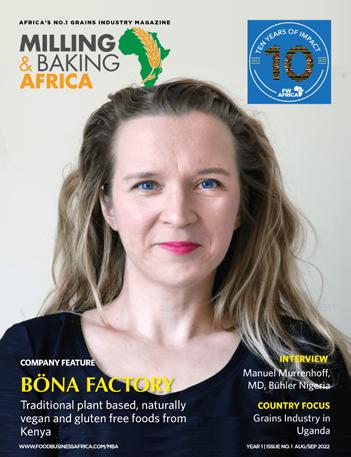


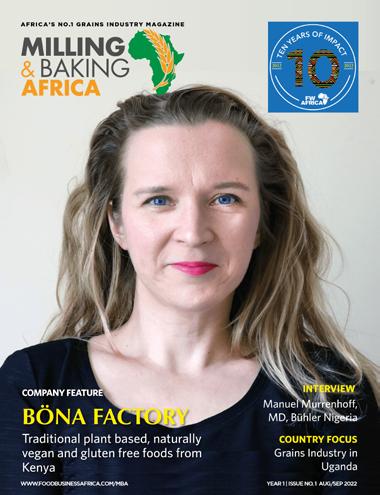

• The magazine is available in both print and digital format, providing our advertisers with a pan-African and worldwide audience
• We offer more than just the magazine - we also offer digital advertising, organise industry events and webinars
Whole grains include grains like wheat, corn, rice, oats, barley, quinoa, sorghum, spelt, rye – when these foods are eaten in their “whole” form. All grains start life as whole grains. In their natural state growing in the fields, whole grains are the entire seed of a plant, containing three parts: the bran, germ, and endosperm.
Whole grains are rich in nutrients that confer a wide range of health benefits including lowering the risk of heart disease. A 10-year study published in PubMed of 17,424 adults observed that those who ate the highest proportion of whole grains in relation to their
total carb intake had a 47% lower risk of heart disease. Furthermore, the fiber, vitamin K, and antioxidants in whole grains have been reported to reduce the risk of stroke. Eating fiber-rich foods can also help fill you up and prevent overeating. The high fiber content in whole grains and products made from them make them more filling than refined grains, and research suggests that they may lower the risk of obesity and also type 2 diabetes. Fiber has also been shown to support healthy digestion in various ways. Primarily, it helps give bulk to stools and lowers your risk of constipation. Additionally, some types of fiber in grains act as prebiotics. This means they help feed your beneficial gut bacteria, which are important for digestive health.
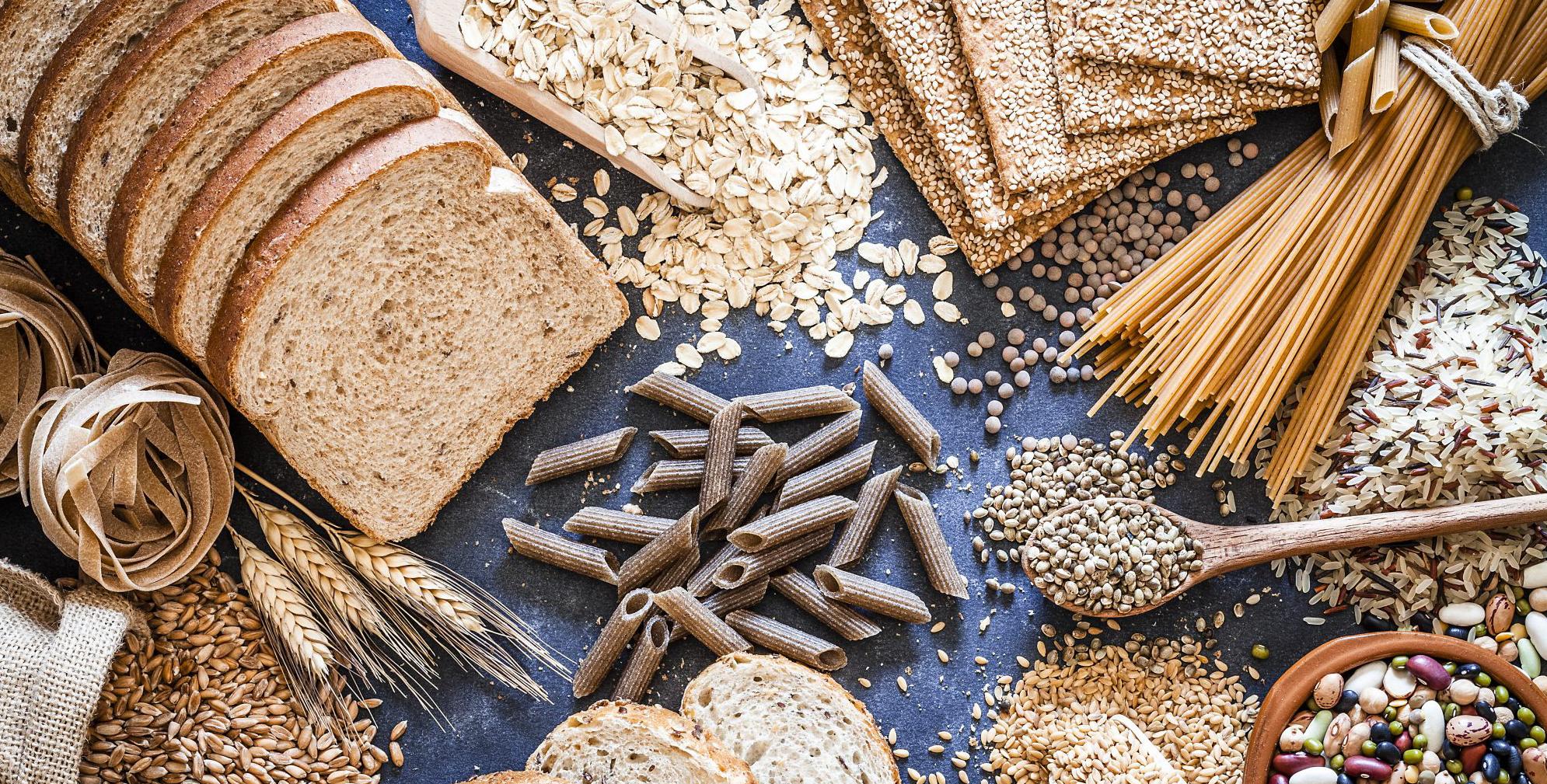
While traditionally all grain was consumed whole, the invention of industrialized roller mills in the late 19th century changed the way we process grains. Milling strips away the bran and germ and leaves only the soft, easy-todigest endosperm. Refining wheat creates fluffy flour that makes light, airy breads and pastries, but the resulting highly processed grains are much lower in nutritional quality. Although some nutrients may be added back by fortification, other nutritious components of whole grains such as phytochemicals cannot be replaced.
Without the fibrous bran, the grain is easier to chew. The germ is removed because of its fat content, which can limit the shelf life of processed wheat products. “By having large-scale refinement technology, we observed that the fat, B vitamins and proteins in whole grain spoiled the flour, so the shelf life was much shorter. This wasn’t a problem before because we were consuming it as it was produced, but now we’re able to create very large amounts of flour and baked goods way ahead of what we needed so we needed to extend the shelflife of that flour,” said Sarah Corwin, PhD, RD, senior principal scientist, plant-based, Ajinomoto Health and Nutrition.
Bakery, breakfast cereals and snacks now account for the largest number of new product introductions composed of whole grains, with side dishes and meals gaining quickly. A growing popularity of nutritious breakfast options is driving the consumption of multi-grain cereals containing seeds, beans, and grains and companies looking to differentiate their breakfast offerings are increasingly exploring whole grains for innovative ideas.
When it comes to breakfast, it doesn’t get more basic than bread which has been a staple food around the world for thousands of years. When it comes to choosing bread, it is best to prioritize whole wheat and whole grain options and Kenya’s market leader in the manufacturing of bread,

Broadway Bakery, has long prided itself on its high-quality bread products. The company in February 2021, launched the first of its kind 50/50 bread, made from a combination of white bread flour and whole grain flour. During the bread’s launch, Broadway Bakery Managing Director Bimal Shah said, “We ensure that we blend high protein wheat sourced from 100 per cent whole grain. Hence, there is no need to add extra enzymes or chemical improvers to improve the quality of the flour and bread”.
South African bakery, Albany Bakeries also offers its ‘superior’ 100% Smooth Wholegrain Sliced Brown Bread Loaf that has been specially designed to mimic the classic texture of white bread while maintaining the famous flavor and nutrition of brown bread. Another bread manufacturer, Rudi’s Organic Bakery recently launched its Organic Seeded Multigrain Bread made with organic whole wheat flour, organic rolled oats, organic flax seeds, organic pumpkin seeds, organic sunflower seeds and organic poppy seeds. It also features a 24-hour fermentation process that the company claims benefits gut health, as well as yields a richer flavor and softer texture.
Cereal is yet another breakfast favorite. According to Grandviewresearch, the global breakfast cereal market size was valued at US$ 36.5 billion in 2021 and is expected to grow at a compound annual growth rate (CAGR) of 3.7% from 2022 to 2030. The Weetabix cereal company is one of the pioneering companies in the healthy breakfast space
REFINING WHEAT CREATES FLUFFY FLOUR THAT MAKES LIGHT, AIRY BREADS AND PASTRIES, BUT THE RESULTING HIGHLY PROCESSED GRAINS ARE MUCH LOWER IN NUTRITIONAL QUALITY
the form of soft-baked morning snack bars, each featuring more than 20 grams of whole grains—providing 12% of the recommended daily value of fiber—and all-natural fruit. At the base of the new products, consumers will find four types of purity protocol gluten-free oats: steel cut oats, rolled oats, oat flakes and oat flour.
and its Weetabix cereal biscuits made with wholegrain wheat and barley and fortified with vitamins and iron has long been lauded as the healthiest breakfast cereal there is. The 85-year-old company is diversifying its portfolio to include other healthy whole grains such as muesli, a readyto-eat cereal made with whole grain cereals and a variety of other ingredients like oats, dried fruit, wheat flakes and nuts. Launched under its Alpen brand, this Swiss-style muesli is "taking breakfast to new heights" with its simple ingredient list: whole grain oats, whole grain wheat, raisins, almonds, and hazelnuts.
Whole grains are also the star ingredients of three new cereals from Kellogg Co. “Whether you’re in the mood for something toasty and sweet or fancy something fruity, Frosted Mini-Wheats Cinnamon Roll and Special K Blueberry have you covered with delicious flavor and whole grains,” said Cindy Huntington, brand director at Kellogg Company. Frosted Mini-Wheats Cinnamon Roll features 100% whole grain frosted biscuit with cinnamon baked inside the layers. Containing 47g of whole grains per serving, the cereal is a source of fibre, as well as vitamins and minerals. Featuring whole blueberries, Special K Blueberry is said to contain key vitamins and minerals, as well as 15g of whole grains per serving. Kellogg also recently added a new variant to its Raisin Bran cereal range made with whole grain toasted oats, honey, bran flakes and raisins. “We’re always looking to create fresh flavor combos at Kellogg’s, and Nutri-Grain never stops innovating to offer parents new ways to serve breakfast and snacks their kids will love and that they can feel good about,” said Sarah Reinecke, senior marketing director at Kellogg.
As social trends shift towards healthier lifestyles, there is a resounding desire for healthy snacks among consumers. According to Grand View Research, the global healthy snacks market size was valued at US$85.6 billion in 2021 and is expected to expand at a compound annual growth rate (CAGR) of 6.6% from 2022 to 2030. For those on the go, breakfast bars offer a portable yet nutritious breakfast alternative. Enjoy Life Foods debuted its Breakfast Ovals, which take
Kellogg's Nutri-Grain bars are another easy, nourishing source of morning energy. These breakfast bars are packed with eight grams of whole grains and are made with real fruit and no artificial flavors or colors. Earlier this year, the company introduced three new flavor mashups within its Nutri-Grain brand, including two new fruit and vegetable breakfast bars and new “Bites.” There is also Akimaa Africa, a Kenya-based company that produces snack foods from millet. Akimaa’s flagship product is a gluten-free millet bar. “The company adds value to millet and comes up with highly nutritious, tasty and affordable millet snacks,” says founder, Irene Etyang.
We can’t talk about snacks without failing to mention Popcorn, beloved globally for being delicious yet light, filling, low in calories, fat and easy to make. What you might not have realized however, is that popcorn is a whole grain! The Safe + Fair Food Company, which specializes in clean, plantbased, allergy-friendly food, snack, and beverage innovations, recently launched its Everything Bagel Seasoned Popcorn. At just 44 calories per cup and 100% whole grain, it features kettle-popped popcorn, sunflower oil, pea protein, and traditional everything bagel spices like sea-salt and garlic. Traditional baked good snack favorites like cookies, crackers and brownies have also been reimagined with whole grain alternatives. Voortman Cookies Ltd., a subsidiary of Hostess Brands, Inc., is doubling down on innovation with two new

AS SOCIAL TRENDS
TOWARDS HEALTHIER LIFESTYLES, THERE IS A RESOUNDING DESIRE FOR HEALTHY SNACKS AMONG CONSUMERS.
cookie offerings: Super Grains and Mega Wafers.

A new entry into the better-for-you snack segment, Voortman Super Grains cookies are baked with 60% whole grains, including rolled oats, wheat, rye and buckwheat. Other whole grain innovations include products like the Graze Wow Bakes chocolate and sea salt bites -- a healthy, oat-based alternative to traditional brownies. The wholesome snacks let consumers indulge without guilt and contain just 100 calories per serving.
Other manufacturers who have been inspired by the nutrition forward consumer whole grain trend to expanded its product lines is Capwell Industries, of one of Kenya’s leading diversified food processing giants. The food manufacturer has recently launched Soko Nutrigo, 100% wholegrain maize flour, fortified with vitamins and minerals to deliver top notch taste and nutrient-density. Soko Nutrigo joins Capwell’s stable of maize flour comprising of Soko Maize meal and the premium sifted maize meal, Amaize.

Despite their litany of benefits, whole grains present their fair share off usability challenges. For one, commercial bakers may be confounded by whole wheat flour as it is not optimal for high-rising breads and tender baked goods. Baking with whole grain flours can adversely
impact dough tolerance and elasticity, resulting in products with less volume and a dense texture. The bran and germ are particularly difficult to work with. "The bran cuts the gluten strands as they form, rendering them useless, unable to trap the carbon dioxide being generated by the yeast," state test kitchen directors at KingArthurFlour.com. "This is one of the reasons 100 percent whole-grain breads tend to be dense rather than light." Additionally, according to "USA Today" reporter Elizabeth Weise, "tannins and phenolic acid in the outer bran of the red wheat used to make wholewheat flour can give it a bitter taste." As a result, there are consumers who prefer their white fluffy counterparts due to their more appealing taste. In fact, the 2021 Whole Grain Consumer Insights Survey found taste as the biggest barriers to whole grain consumption at 33%.
GoodMills Innovation, part of Europe's leading milling corporation, the GoodMills Group, has come up with its own solution to the dark and rough texture of whole grain bread. Its Snow Wheat whole grain flours and granules for breads, rolls and pastry products are soft and light – but still full of whole grain goodness. The Snow Wheat range is made from white wheat –a special grain variety that’s particularly light in color and low in bitter notes. The result of which is smooth and light baked goods that neither look
nor taste like whole grain, but do deliver its full nutritional value. In regard to the taste, GoodMills has successfully used fermentation technology to remove bitterness in a natural way, and nature-made aroma precursors to help create various aroma profiles.
Puratos, a global Bakery, Pastry & Chocolate solutions supplier, has also seen an increased interest in consumers looking for flavorful ways to incorporate more whole grain into their diet. To address this growing interest, the company recently launched Sapore Leo, a 100 percent liquid whole wheat, organic sourdough without the bitter taste of whole grains. “This latest innovation can be added to a wide range of breads, and its mild sour flavor helps bakers create amazing whole wheat breads without the bitter taste often associated with whole grain products. As a 100 percent whole wheat sourdough, Sapore Leo helps achieve whole wheat and fiber claims associated with a happy and healthy gut,” Michael Gleason, product manager, bakery, Puratos USA, Pennsauken, USA.
Food companies are also seeking whole grain flour that resembles enriched flour in taste, texture and color and Ardent Mill’s Ultragrain family of flour delivers whole grain nutrition in mainstream foods tailored to these consumers preferences. Ultragrain comes from exclusive varieties of white wheat that are milder and sweeter than standard red whole wheat and offers whole grain nutrition and white flour appeal, according to the company.
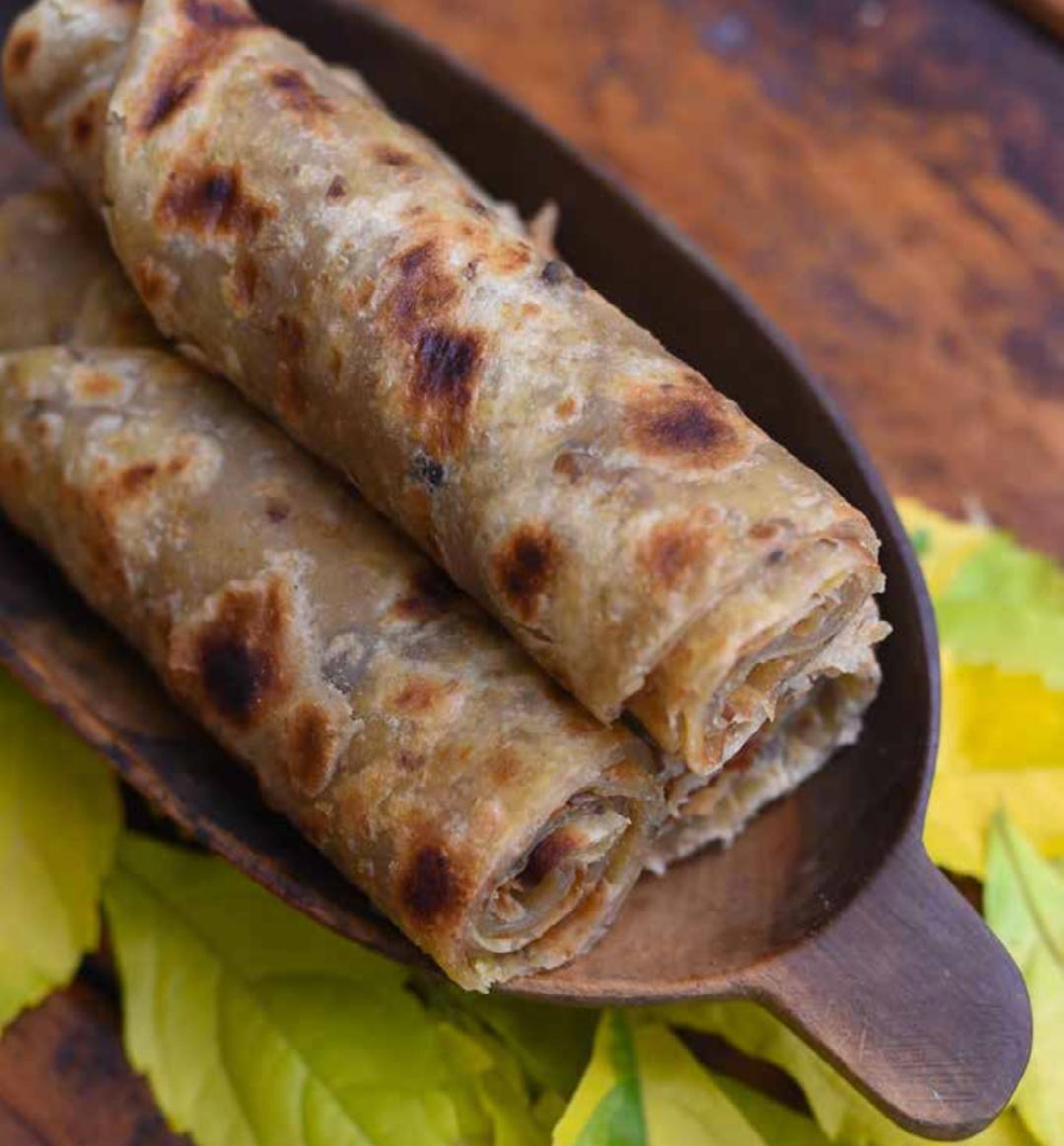
To create more palatable products packed with nutrition, millers have taken to using ancient grains with distinct flavor
profiles like quinoa, amaranth and teff to experiment with the taste, texture and color of whole grain products. American flour milling and ingredient company Ardent Mills, gives examples of how its ancient grains portfolio offers diverse flavors. While amaranth has a peppery flavor, other flavors range from nutty, earthy like in quinoa to slightly sweet and molasses-like in teff. Millet has a mild flavor that allows it to be blended with the flour of other grains.
According to Zachery Sanders, director of marketing for Ardent Mills, buckwheat can deliver a dark, roasted, chocolate-like note in desserts, and the dark brown color can also add a little difference to pie or tart crusts. Quinoa flour has a strong, nutty taste, but some people have found that toasting it helps mellow out the taste, according to Firebird Artisan Mills, Harvey, N.D. Sorghum’s mild, lightly sweet taste translates well into pastries and cookies, according to the company. Bakers are also getting creative with color. While grain-based foods are typically beige, interest in grains that bring some pigment to the formulation has baked foods getting more colorful. “The developer can mix and match the whole kernels or seeds or the milled flours to create interesting colors. Ivory teff or white quinoa would be creamy in color, while whole white wheat or millet could
be described as a yellow-beige. Red quinoa, red rice or red corn would impart a red-pink color in the finished product,” said Susan Kay, manager, product applications for Bay State Milling.
Gluten-free is one of the strongest growth drivers in the food industry today. For the estimated 1% of the population diagnosed with celiac disease, consuming foods that contain gluten can cause significant intestinal damage as well as other health risks. Today, however, the gluten-free diet is being taken up voluntarily by a greater percentage of people
who experience discomfort when they consume gluten-containing foods, or who perceive gluten-free diets to be healthier. While a majority of whole grains are naturally gluten free, some like wheat, barley, triticale and rye contain gluten.
However, several gluten-free whole grain options on the market are both tasty and nutritious and offer a great alternative to traditional breads for those who avoid gluten. Germany-based GoodMills Innovation has developed a new variety of wheat based on ancient grains called 2ab Wheat, that contains purely ancient gluten without the D genome making it suitable for those who are gluten sensitive.
In addition to gluten, Salt reduction remains high on the agenda for food manufacturers and brands tapping into increased demand for healthy products with a clean label. However, in baking, salt reduction impacts dough stability and reduces its tolerance during processing, which could create a lessthan-ideal crumb structure, texture and overall cohesiveness. Global sciencebased company, DSM, has come up with its own solution to both the gluten and salt reduction conundrums: enzymes.
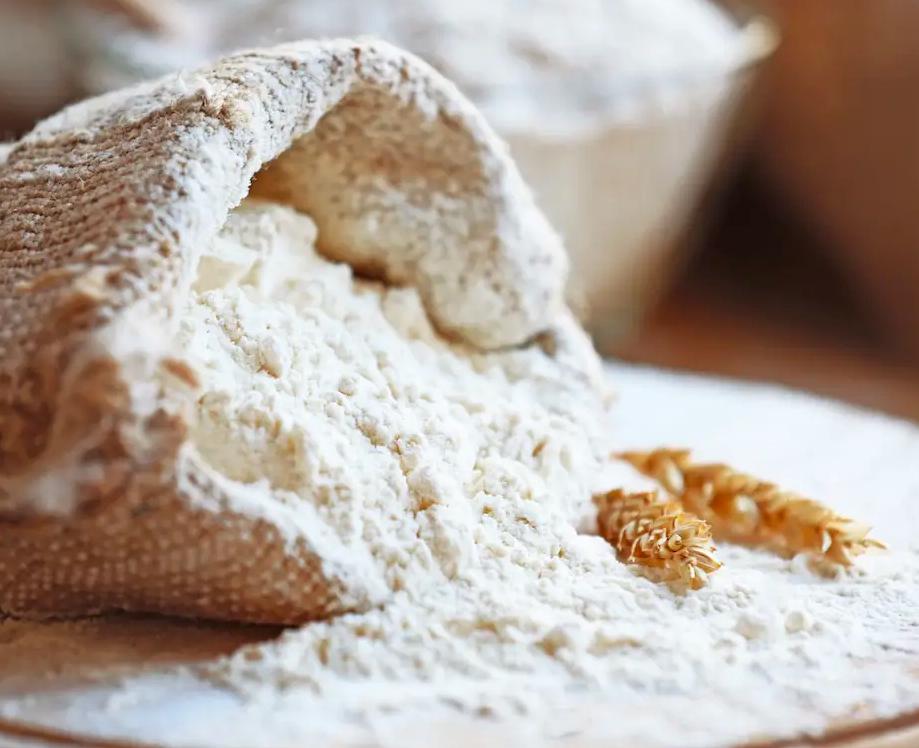
According to the company, enzymes play a key role in food processing, improve dough machinability, process tolerance and loaf volume, and deliver important benefits in baked goods, such as delayed staling and increased softness. With over 150 years of experience in perfecting the use of enzymes for baking, the company found that the use of a glucose oxidase, such its BakeZyme Go Pure, with a hemicellulase can optimize a whole grain bread recipe with increased fibers for improved stability and tolerance. It also discovered that creating high-quality baked goods with reduced salt can be optimized using a lipase, such as its Panamore Golden enzyme, to improve dough tolerance as well as crumb structure and volume. Although flours used for the production of bakery products contain endogenous enzymes, further enriching them with enzymes improves
process performance. In addition, the synergistic effect of combinations of these enzymes on the dough improves the final product.
With a growing mound of research highlighting the health benefits of whole grains, their popularity is growing at a remarkable rate – proving in market after market that consumers worldwide are beginning to understand the importance of enjoying more whole grains. A 2022 IFIC Food and Health Survey found that of people who seek these particular health benefits, 53% report that they consume whole grains to improve cardiovascular health, 42% report that they consume whole grains to lose weight. Another 35% report that they consume whole grains to improve digestive/gut health, 34% report that they do so to improve immune function, and 33% to improve energy/reduce fatigue.
Whole grains have also been charted as the path to a healthier future for ourselves and our planet. With almost a third of greenhouse gas emissions coming from our food consumption, a number of leading Nordic researchers
from, among others, the Danish Cancer Society have found that whole grains are an environmentally friendly alternative to animal protein. The growing popularity of plant-based diets and flexitarian eating styles also support the inclusion of whole grains and lend them long term viability, further bolstering the whole grains space. Market Data Forecast estimates the Whole Grains Foods Market will reach US$5 billion by 2027, with a CAGR of 3.8 % over the analysis period 20222027. Bakery products are expected to grow at a CAGR of 3.5% to reach US$ 27 billion by the end of 2027.
Despite the increased interest, studies show consumers around the world are confused about how much whole grains they should be eating, and which foods contain them. A recent global study by General Mills and Nestlé found that of the more than 16,000 people surveyed, 83% said they weren’t sure how many grams they should be getting and 47% thought they get enough whole grains. This could be an opportunity for manufacturers to include more informative whole grain call-outs on their product packaging.
 By Madeleine Orina
By Madeleine Orina
Yeasts can be considered man’s oldest industrial microorganism, even dating before the development of a written language. Although there is no information on when yeast was first used to bake bread, the earliest definite records come from Ancient Egypt. Bakers in Egypt must have observed that when a mixture of flour meal and water was left longer than usual on a warm day, it increased in size and the resulting dough made breads that were lighter and tastier than the hard flatbreads made from dough that had not been given sufficient time to rise. Although they may not have had an understanding of the science behind it, they
certainly knew it was a practice worth keeping. Several thousand years later, French chemist and microbiologist Louis Pasteur determined that it was microorganisms in the air that caused food to ferment and spoil. His work brought new understanding to a centuries old practice, setting the stage for modern science which led to the identification of yeast as the microbe responsible for fermentation and its further development to produce strains for different bakery applications.
Essentially, yeast serves to increase the volume of baked products, and also improve the flavor, texture, grain, color, and eating quality. Yeast is
the driving force behind fermentation, the magical process that allows a dense mass of dough to become a well-risen loaf of bread. And yet yeast is nothing more than a single-celled fungus. How does it do it? Yeast converts the sugars present in the dough into carbon dioxide. As the carbon dioxide is released into the liquid bread dough, it can’t escape due to the dough’s elasticity. It is instead held within air bubbles by the elastic gluten network created during the mixing and kneading processes, causing the entire dough to rise. During the baking process, the yeast dies but the air pockets are set in place. Once the bread has baked, this is what gives the loaf its airy texture.
There is however more to yeast than its leavening properties alone. The ethyl alcohol produced by yeast during fermentation contributes to the flavor and aroma of bread and other yeast-leavened products. Additionally, as sugars are metabolized when yeast produces carbon dioxide, a spectrum of intermediate metabolites are produced, many of which are precursors for flavor. Fermentation flavor and aroma can vary from a very mild flavor to a strong sour flavor as often found in sourdough breads.
Yeast imbues bread and baked goods with its natural richness in nutrients and tastes which contributes to our general well-being. Although the precise nutrient values of yeast can vary with manufacturer, generally yeasts contain: Dietary fibers—typically 30-40 percent dry weight—which play a role in maintaining normal intestinal function and stimulating the immune system. They are also known to act as prebiotic, improve insulin resistance, and reduce serum cholesterol. Yeast typically contains 30 to 40 percent (dry weight) fibers.
Historically, bakery products were much more limited in variety and fermentation was mainly achieved by the sourdough method, which involved using the excess yeast that was produced during the brewing of beer or distillation alcohol.

The history of yeast took a decisive turn in 1857 with Louis Pasteur’s discovery of the fermentation process and today, baker's yeast is the common name for the strains of yeast used when baking bread and other baked goods.
Breads that are made with yeast include all kinds of loaves, rolls and buns as well as baguettes and ciabatta. Other bread-like foods containing yeast are soft pretzels, bagels, English muffins, bread sticks, pizza and sometimes biscuits. Some flat breads, among them Indian naan, Italian focaccia and Ethiopian injera, are also made with yeast.
Enzymes
It also has minerals like potassium and zinc which are involved in growth, development, energy metabolism, and the reproductive system as well as B vitamins which contribute to normal cellular functions, growth, and development.
Yeast also features in a fair share of sweet treats. Sweet, bread-like items like cinnamon rolls, croissants, sweet rolls, hot cross buns, panettone and coffee cake all usually include yeast. Donuts and beignets, which are fried rather than baked, are made using yeast along with some recipes for muffins, waffles and pancakes.
To cater for the ever-diversifying range of baked goods, yeast has been refined over the years into four main types of commercially produced baker's yeast: active dry, instant,
fresh and liquid yeast. All of these yeasts will work to leaven doughs in any given yeasted baking recipe, but each has slightly different properties, and, for the more discerning palate, varying flavors.
Active Dry Yeast is the forerunner of all commercially produced yeast today and it’s the most common variety sold in grocery stores. Resembling small granules, this yeast will activate once placed in water— this is referred to as proofing— and is ideal for most types of bread. Active dry yeast is a two-rise yeast, meaning that you mix the dough and let it double, before shaping. After shaping, you will need a second rising period before baking. The down-side of Active Dry Yeast is that has a fairly short shelf life, that is, it's potency declines over time and it can sometimes fail without apparent reason.
Instant yeast is made using a similar process as active dry yeast, although it is dried more quickly and milled into finer particles, and as a result, it dissolves and activates faster. Instant yeast can be mixed directly into a batch of dry ingredients without waiting for it to bloom. You may also come across some yeast marketed as “rapid-rise,” which is a variety of instant yeast that
is typically enhanced with enzymes that help strengthen the gluten and make the dough rise faster (hence, the name). Most leavened baking projects require two separate rises, but when you’re using instant, you can typically bake after just one rise.

Fresh yeast, also known as compressed cake, is good for baked goods that require a long, slow rise time (think French breads like brioche) thanks to its quick activation and ability to stay active longer. Fresh yeast is soft and mostly used by professional bakers. It is packed with moist and living yeast cells thus is easily perishable hence suggested to be used in one go. If not used right away it should be frozen or refrigerated.
Yeast is in a naturally liquid state when it emerges from the fermenter, becoming solid only after having been partly dehydrated and compressed to be subsequently packaged. Liquid yeast was the most popular form of yeast in the early 19th century, prior
to the invention of compressed or cake yeast. It is basically a slurry of live yeast organisms, flour (or other carbohydrates), and water, similar to a sourdough or bread starter. Liquid yeast has witnessed substantial development in the industrial sector in past years. Since 2005, there has been a marked interest on the part of craft bakers in search of a global solution that covers both the product and the relevant technologies and operating methods. The liquid format makes highly precise, automatic dosing particularly easy and enables better control over the quantities used. Moreover, reduced handling on the part of operators and mixers also improves productivity.
In a scientific paper titled ‘Innovation trends in industrial biotechnology’ authored by Jens Nielsen, Christian Brix and Dina Petrovic, microbial
fermentation is highlighted as a key contributor in the industrial biotechnology sector, as it will enable a sustainable and scalable production of valuable foods and food ingredients.
Yeast and its development are a strategic growth area in microbial fermentation. Concomitant with this, bread manufacturers are kicking it up a notch with niche recipe developments and yeast is now a much more exact science when it comes to leavening bread. Baked goods with highly colored crusts or made at temperature ¬processes in excess of 120°C can trigger formation of acrylamides from the amino acid asparagine present in many proteins. Due to the potential carcinogenic properties of acrylamide1 the announcement of the Swedish National Food Authority and the University of Stockholm in April 2002 regarding findings of acrylamide in foodstuff initiated intense and rapid research efforts.
To this effect, Renaissance Ingredients has emerged as a global leader in the development and commercialization of acrylamide-reducing yeast for food production. The Vancouver based bio-science company isolated a strain of baker’s yeast with an accelerated natural ability to consume asparagine. Its acrylamidereducing (AR) yeast has been found to cut

acrylamide by 80% in bread and up to 95% in other foods, according to tests described by the company’s president, Matthew Dahabieh, PhD. “These results confirm the efficacy, simplicity and seamlessness of using our AR yeast in bread and toast,” he said. “In most cases, the acrylamide content of toasted bread made with it is less than that of untoasted bread made with conventional baker’s yeast.”
Yeast appears to be the gift that just keeps on giving. According to BakingBusiness, baker’s yeast naturally produces ergosterol, the precursor of vitamin D, and is a base for manufacturing vitamin D dietary supplements. This prompted the baker’s yeast division of Lallemand to develop a process that treats yeast with UVB light to produce a natural and vegetarian source of Vitamin D yeast which can be used in bread, baked goods and other food products. “Consumers are more aware of vitamin D benefits and risk of deficiency,” said the company’s former CEO Gary Edwards. Now a few years old, vitamin-D enriched yeast promises to quell this concern.
The production process of yeast, in terms of efficiency, has also seen a fair share of revolutionary upgrades. Novozymes, a world leader in biological solutions, launched Innova
yeasts in 2020 which according to the company, allows producers to maximize inputs, achieve throughput, and production targets, without losing ethanol yield to common stressors such as high temperature. Last year Novozymes introduced a new addition to its powerful Innova yeast platform called Innova Quantum. The robust new yeast grants ethanol plants longer fermentation times of more than 60 hours to realize higher ethanol yields and processing efficiencies than ever before. And, most importantly, plants can achieve this industry-leading yield without trade-offs which put their operation at risk.“Innova Quantum is the most advanced yeast available and sets a new industry benchmark for the highest yielding, most robust yeast to maximize producer yield and fermentation reliability,” says Rene Garza, Novozymes’ Vice President for Agricultural & Industrial Biosolutions, North America.
There is also a long history of the use of live yeast in animal feed. According to a paper titled, ‘Mode of action of yeast in animal nutrition’, published by PubBioMed Central Research Publishing Service, yeast has an ability to scavenge oxygen from the rumen creating an ecosystem more favorable

for growth and activity of the rumen anaerobic microbes. According to Lallemand’s animal nutrition segment, this positive microbiota modulation is how feeding a live yeast can help alleviate the impact of heat stress in pigs. The company came up with a novel solution to this effect, Levucell SB, a feed additive consisting of viable cells of a strain of Saccharomyces cerevisiae (a species of yeast) that has been demonstrated to help monogastric animals maintain good health and wellbeing, thanks to unique properties. Speaking on the results of the feed additive’s efficacy trial, Hannah Elliott, monogastric technical manager at Lallemand Animal Nutrition said: “pigs fed on the live yeast, Levucell SB, were found to have higher levels of positive bacteria present, which correlated with higher dry matter intake and energy retention."
As leading market players increasingly invest in research and development (R&D) activities that yield novel capabilities to develop new yeast products and extend the substrate range, the market is expected to gain significant growth. Data Bridge Market Research analyses that the market is growing with the CAGR of 8.2% in the forecast period of 2020 to 2027 and is expected to reach US$94.62 billion by 2027 from US$50.55 billion in 2019. The increasing consumption of processed
food and growing demand for nutritional yeast is another major driving factor for the market’s growth. Moreover, the rising demand of functional bakery products, positive trend in alcoholic beverage consumption and improved production of animal feed is adding towards the significant market growth expected in the yeast market. The increasing utilization of yeast in producing ethanol in the biofuel industry as well as the expanding applications of the product in bioremediation and removal of heavy metals from wastewater offers lucrative growth opportunities to manufacturers outside of the food, feed and beverage industries.
PIGS FED ON THE LIVE YEAST, LEVUCELL SB, WERE FOUND TO HAVE HIGHER LEVELS OF POSITIVE BACTERIA PRESENT, WHICH CORRELATED WITH HIGHER DRY MATTER INTAKE AND ENERGY RETENTION.

Cooked food has been a part of our civilization for thousands of years. Throughout the Mediterranean, Africa and the Roman Empire, wood fires in a stone enclosure have been used to broil meat and bake bread. This was the basic premise for the oven, as it provided a different heat source for cooking compared to the open-air fire used to heat water and make soup. The first official oven in recorded history was built in 1490, in France and made using brick and tile.
Fast forward to the 21st century, the oven is often the anchor of a busy household, helping to prepare Sunday roasts, goodies such as cakes and cookies, as well as the (occasional) frozen pizza to crispy perfection. Without an oven,
your kitchen almost seems bare.
Fundamentally, baking may seem to be a rather static topic: mix flour, water, leavening and various flavoring materials, and heat the mixture to gelatinize starch and denature the protein. However, this millennia-old process has been undergoing rapid change during this century, and even more during the last two decades. The fantastic advancements in the sector over the years have enabled manufacturers to churn out ovens with many features, making them more and more intuitive and practical. From robotics and extrusion to data analytics and new learning techniques, advancements in oven technologies are adding value in bakeries across the world.
Baking is made possible by thermal energy. The energy is heat and it can be generated from many sources. Some ovens heat materials using the combustion of a fuel, such as wood, coal, or natural gas (e.g., natural gas, propane, butane, liquid petroleum gas) while others heat materials by exposing them to microwave radiation or resistive heating. In conventional baking processes there are three general ways heat produced from these various sources can be transferred to the dough piece, namely radiation, convection and conduction.
Radiant heat consists principally of invisible infrared rays that emanate from the heated internal surfaces of the oven. Its behavior differs from the other types of heat in two distinct ways: it is blocked in its transmission by any intervening opaque object, and it is highly responsive to the absorptive properties of the product that is exposed to it.
Convected heat is that which is transferred by means of inter-mixing fluid media such as air, water, vapor or combination gases. In ovens, convected heat is distributed through the baking chamber by the turbulence of the internal atmosphere and is transferred by conduction to the dough piece when the hot air contacts the dough surface. The hot air enters the oven chamber through perforated pipes or plates,
called “coloraiders,” located above and below the product. It is recommended that the air is blown onto the product in a defined pattern to provide good color development and maximum heat transfer.
Conducted heat is that which is transmitted by physical contact from one body to another or from one part to another in the same body. Thus, the side and bottom crusts in pan bread result mainly from the heat that is transmitted by the walls of the pan while the gradual heating of the interior of the dough piece during baking is largely the result of heat conditions inside the bread.
While all three modes play significant roles in baking, their relative importance depends largely on the type and design of the oven. As Ann Wells, commercial director at Brook Food & Bakery Equipment explains, “Different types of ovens have different heat transfer concepts and are therefore built-in different ways.”

Convection ovens are arguably some of the most widely used ovens, both domestically and industrially. These ovens have heating elements at the top and the bottom of the oven cavity. They are also equipped with a fan that helps circulate hot air throughout the oven cavity, helping to reduce hot and cool spots for more even results. Convection ovens can also have a third heating element, called True Convection, to help foods cook faster by distributing hot air around the top, bottom and sides of the meal.
These ovens are particularly ideal for baking as they may eliminate the need to rotate dishes in the oven. These ovens are heated by hot water, gas and electricity and the heat generated from these sources are introduced into the oven by convection. Two designs of these ovens exist commercially: batch or continuous. Batch ovens are used when all materials being heated need the same temperature and duration.
FROM ROBOTICS AND EXTRUSION TO DATA ANALYTICS AND NEW LEARNING TECHNIQUES, ADVANCEMENTS IN OVEN TECHNOLOGIES ARE ADDING VALUE IN BAKERIES ACROSS THE WORLD.
Continuous ovens remain at the same temperature and sometimes have a rotating section creating a conveyor belt.
Category wise, convection ovens, like many others fall under two categories: direct-fired and indirect-fired. They can be powered using gas (the most common), oil, or electricity. The way direct- and indirect-fired ovens transfer heat is similar, with the main difference being whether or not the food products come into contact with the products of combustion: in a direct-fired oven, ribbon burners placed above and below the oven band heats the baking chamber directly, thus the food products come into contact with combustion products; in an indirect-fired oven, the burners heat a heat exchanger, which transfers the heat into the baking chamber.
Direct-fired ovens are ideal for products that require high temperatures and short baking times and Indirect-fired ovens are better for products that require lower temperatures and longer baking times. In both, the infrared radiation provides a stable penetrative heat transfer, creating products with excellent volume, texture and flavour.

A rack oven is a vertical oven into which racks full of sheet pans can be wheeled for baking. This unit can hold 8 to 20 sheet pans per baking cycle. Some units make use of electric or fuel sources, and place fans inside the baking chamber (generation of convection drying) to speed up baking times and to develop special features in the products. This oven is suitable for retail operations due to its floor space economy, and medium to long baking cycle times. These ovens usually have programmable (saved) recipes so that the operator can change baking time and temperature, intensity of air ventilation, and steam impingement frequency.
In a reel oven, trays or shelves are placed on platforms rotating on a central horizontal axis. They are normally directly fired with gas or electricity, with the heating source
located centrally across the floor of the chamber. Reel ovens often do not generate uniform distribution of heat transfer due to their revolving nature and interfering structure for radiant heat transfer. Products placed on sheet pans or trays continuously rotating may present uneven coloring or poor final moisture distribution. This type of oven is mostly designed for retail bakeries or baking plants with small-scale production.
Tunnel ovens are continuous mode operation baking units that typically have a long baking chamber (usually more than 80 meters in length), which goes from one side (loading point) to another (unloading point) in a straight conveying band. The conveyor band material may be built of wire mesh or carbon steel sheets. Tunnel ovens are commonly powered by fuels such as natural gas (used for baking), and electricity (for powering air circulation and conveying system). The baking chamber may be divided into several baking zones which makes the application of a temperature sequence possible, providing the baker with more flexibility in baking conditions and more complexity for controlling baking parameters.
Conveyor ovens, on the other hand, have two parallel endless conveying chains that carry trays of products through the length of the baking chamber, so the dough pieces continually enter and leave the oven. Their main advantages are simplicity of design, and uniformity of baking as the products travel the same path through the baking chamber. A motor drive directly controls band speed, thereby determining baking cycle time. Conveyorized ovens may be single-lap or double-lap. In single-lap ovens, the trays containing the products travel a single pass (back and forth).
THE NEED TO HAVE CONSISTENT AND REPRODUCIBLE BAKING RESULTS PROMPTED THE INVENTION OF SMART OVENS WHICH CLOSELY REGULATE AND AUTOMATE THE BAKING PROCESS.
IN NUMBERS
The trays in a double-lap oven travel through four heat zones instead of the two zones of the single-lap oven.
Rising fuel costs and bakers’ desires to achieve more sustainable operations through more efficient heating mechanisms have prompted oven manufacturers to redesign their industrial ovens. Notorious for their harmful pollutant generation, Gas ovens have had to undergo various developments to cut down on their carbon footprint. The Kitchen Range Hood, an overhead ventilating system consisting of a device containing a mechanical fan that hangs above the stove or cooktop in the kitchen is one of the solutions aimed at curtailing these emissions. These wondrous invention sucks up the polluted air and filters it (as with a ductless model) or is carried to the exterior (with a ducted model). A more subtle alternative to the typical vent hood is the downdraft hood, which vent through the floor. There are some models that can be hidden into the oven’s cabinet layout while others have a telescopic feature, so they can rise from the cooktop with the touch of a button.
AMF Bakery Systems have also introduced an emission-free, direct-fired, hydrogen-fueled tunnel oven. The modular Multibake VITA
Tunnel Oven by AMF Den Boer allows bakers to reduce carbon dioxide emissions by 99.9% within the baking process while reducing the cost of utilities. Bühler Group is working to develop environmentally friendly solutions, and its bestselling convection oven, the Meincke Turbu, provides sustainable production and minimal CO2 emissions. Bühler’s sustainability goal of reducing waste, energy and water usage by 50% in its customers’ value chains by 2025 is also made more possible with the new Meincke Turbu 4. Turbu 4 can use both gas and electric heating sources. If operated with gas, harmful emissions are minimized by low NOx burners. If electric, there are zero emissions.
A need by manufactures to make high quality products in a reproducible way have prompted the invention of novel technologies that address shortcomings which exist in standard baking ovens. Development of hot spots is one of the great drawbacks in standard convection ovens as it greatly reduces their efficiency. Seeking to enhance efficiency, manufacturers are actively launching convection ovens which have features that ensure even heat distribution inside the oven chamber. For instance, Alto-Shaam provides commercial gas convection ovens that are equipped with its patented transverse-flow burner system that ensures there is even hot air distribution inside the cooking chamber, reducing the need to rotate the pans for consistent cooking.
The baking process demands a high amount of energy, but only one-third of the total energy supply to the baking oven is actually used for baking, while the rest is dissipated to the environment. This implies that the energy input to the baking process can be significantly reduced. Vulcan is pushing to ensure greater energy use with the launch of its energy efficient VC5G gas convection oven. VC5G is independently certified by ENERGY STAR with a 56% cooking efficiency rating, the highest ever awarded to a full-size gas convection oven. This appeals to the ever-growing environmentally conscious customer base, who have shown a clear preference towards the product.
GEA, a company with a longstanding history in oven technology recently launched CookStar 1000 Gen 3 industrial spiral oven, which through a combination of optimized airflow, climate control and dynamic exhaust system

ensures energy is used exactly as and when it is needed and reduces heat and steam losses. Auto-Bake, another baking solution provider has launched an electric alternative to its direct-gas fired convection oven. Scott McCally, President, Auto-Bake Serpentine, said this oven is 40% more energy efficient than its standard gas-fired model, owing to both heating system design and their low surface area to volume ratio.

As fun as baking could be, or even easy, owing to the numerous advancements that have streamlined the process, having to take soap and water to the greasy aftermath is often grueling for most people. Not to worry, oven cleaning has now been made vastly efficient by the invention of selfcleaning ovens. Self-cleaning ovens have a feature called pyrolytic cleaning. The oven heats itself to an extremely high temperature, which burns away any food residue inside and turns it to ash, which can be easily removed by running a damp cloth over the inside. Since General Electric introduced the first oven with a self-cleaning feature in 1963, these baking marvels have seen great advancements. For example, Whirlpool’s 5.0 cu. ft. Front Control Gas Range with Cast-Iron Grates Oven features adjustable self-cleaning settings, which allow you to pick a cycle based on the amount of ash your oven has, from light, to moderate to heavy.
The need to have consistent and reproducible baking results prompted the invention of smart ovens which closely regulate and automate the baking process. In smart ovens, touch screen controllers enable one to easily adjust and set baking temperatures. Like with most "smart" appliances, what separates smart ovens from more-conventional ovens is their connectedness. These Wi-Fi and or Bluetooth enabled devices allow you to control your baking using your smart
phone.
ITW Food Equipment Group is a pioneer in the field of high tech ovens. Its SmartConnect app allows users to gain important insight into how equipment is being used, monitor sanitization status, water and energy consumption, and reduce downtime with equipment status and email alerts notifying users about machine errors. “Our customers are becoming more digitally savvy every day. Having real time access to equipment usage information and alerts helps them maximize productivity of uptime and minimize the impact of downtime,” said ITW Food Equipment Group director of marketing Todd Blair.
AI technology has also been incorporated into ovens, and this could make end user training a thing of the past. An ideal example is TurboChef Technologies which provides commercial convection ovens that come equipped with over 3,500 pre-programed cooking menus, which helps the operator to select different food menus and achieve consistent cooking results every time.
When buying an oven, clearly there are a lot of options, but your bottom line remains ensuring you are selecting the best oven to suit your needs. Most
important is deciding the setting in which you intend to use your oven, be it commercially or in your home. If intended for commercial use it is important to know the capacity of your production and to choose an oven that will accommodate your output. The other size of the coin would be size. If you operate in a facility where there are strict space requirements, with limited floor space and lots of different units to accommodate, you may want to go for one that is economical on space. In a commercial bakery, not all bakers are experts. This means that the oven should be simple and easy to use. For this purpose, you can choose an oven with manual or pre-programmed cooking modes.
Additionally, for both commercial and at home ovens it is important to decide on your preferred a heat source and to also look for other efficient features like energy saving labels as well as ease operation features like intuitive touchscreen technology as well as the ability to give reproducible results.Lastly, you need to go for a reliable oven. A malfunctioning commercial oven can be disastrous for your business. Apart from losing the investment in such a purchase, it may also cut down your profits. Make sure to go for a product that is durable and reliable.
Animal breeders are aware of the fact that feeding animals with pellets instead of other types of feeds come with great benefits such as the absence of feed separation, reduced feed wastage, increased feed intake, improved feed hygiene and possibility to use low-cost ingredients.
However, on the other side, pelleting means increased energy and processing costs in the animal feed production plant, which is eventually transferred to the farmer. In most cases, farmers have to ask themselves whether the benefits of pelleting compensate the increased costs.
Thankfully, advances in technologies are allowing feed pellet manufacturers to produce high quality pellets at the lowest possible cost and thus giving farmers an opportunity to affordably access this valuable feed.
In this article, we explore feed pelleting, its
importance in animal nutrition, and ways in which technology is improving pellet quality while making efforts at driving down costs.

Feed pellets are not a bullet answer to animal nutrition needs. Arthur vom Hofe, CPM Europe’s Segment Manager Feed & Oilseeds notes that there is no definitive answer to the question as to whether feed pellet is super to other nutrition types such as mash feeds.
“This choice can be determined by many factors such as animal’s type, physiology, age and nutritional needs. Even the cost/ performance balance is a determining factor,” Hofe explains. Stefan Hoh, Head of Market Segment Feed Milling and Premix at Bühler Group affirms this. Hoh notes that different animals will need feed pellets at different stages of their growth. “For broilers, it has been proven that pelleted or granulated feed leads
to a better performance in the starter phase of growth as compared to mash feed. However, in their middle and final fattening stage, the performance is improved by providing feed as meal.”

When it comes to pigs and poultry, different feed forms (meal, pellets, or granules) can be found. However, livestock trials have shown slightly improved feed conversion rates for pigs fed with pellets, as compared to control groups fed with mash or pellets of lower quality, respectively. When it comes to cattle and dairy cattle feed, pellets offer superior benefits that other feed types. “Cows consume pellets more rapidly than other forms of feed. This is important because eating may have a limiting effect on milk production,” adds Hoh.
When it comes to pellet quality, the particle size is very important. Fine particles act like a glue and form a better and tighter framework due to their larger overall surface area, strengthening the cohesive forces. Coarse particles are however a source
rate and feed efficiency.
Hardness has for a long time been used to determine pellet quality but pellet durability has taken over as the standard for quality as it is regard by many industry experts today as a better measure. To accurately measure pellet durability, the Holmen test is used. With this test, 100 g of pellets is placed in a chamber, blown about 60 to 120 seconds by a jet of air, and then weighed, giving a direct read of pellet durability. Fines are removed during the blowing process.
Pellet quality is not only made in the pellet mill. Many variables from the ingredients and formulation, and process and technology used affect the quality of the final product.
Regarding the ingredients and formulation, there are feedstuff materials that pelletize well and produce a durable pellet, and there are others that won’t.
the conditioner.”
Corn and raw fiber with a high share of lignin are also known to deteriorate pellet quality. Wheat and raw fiber with a high share of cellulose are on the other hand known to promote pellet quality. Striking a balance between these ingredients thus becomes key during the pellet production process.
When it comes to the process and technology, both Hoh and Hofe agree that the conditioning process is of utmost importance.
of pellet fracture because they have a smaller surface area, which means that less liquid and solid bridges can be formed on their surface. Good quality pellet should however not have a higher percentage of fines present as this has a negative effect on growth
“While cereal grains make up a major part of most feed formulas, fats and oils, being present in much smaller amounts can have the same, or even a much greater impact on pellet quality,” says Hoh. “For high-fat formulations, better pellet quality can be expected when fat is bound in the raw materials compared to adding fat as a liquid in
“The conditioning process, where usually steam and sometimes other liquids are added, is one of the most determining parameters for the pellet mill performance,” Hofe says. His peer from Buhler adds that moisture content and temperature of the mash at the press inlet are decisive factors at this stage of the production process. Both are greatly influenced by the quantity and characteristics of the steam during the conditioning process. “As rule of thumb, the pellet quality can be improved by increasing the conditioning temperature, while there is a trade-off at temperatures above 85 °C, where little to no further improvement of the pellet quality can
be expected,” Hoh explains.
A pellet die, which is a tool used to form thin cylindrical pellets from a powder using a pellet press, can also have an impact on pellet quality. “When it comes to die specifications, the ratio of hole length and hole diameter, as well as the dwell time in the die, are of great importance,” Hoh explains. “Other determining factors are the feeding rate, the distribution of the mash in the pelleting chamber, as well as the roll gap.”
To ensure an effective process, all critical parameters of the pelleting process from motor load to, throughput, temperatures, and wear should therefore be constantly monitored. An integrated process line or plant control system can be beneficial in this regard. It’s also important to
of tools that are able to control the amount of energy put in by the pellet mill.
A number of technology providers have introduced new tools to monitor critical parameters of the pelleting process, giving the pellet mill operator the opportunity to have a reliable and flexible pelleting process, producing optimal pellet quality with the lowest energy usage.
Reducing energy costs not only drives down costs but enhances the environmental credentials of the feed industry. This has become important as climate change pushes feed manufactures and breeders into adopting climate smart technologies to reduce their impact on the environment.
The high level of safety being required of animal feeds nowadays has seen technology providers provide new tools to improve safety and hygient of the feed. For example, Bühler’s Hymix Plus tool provides conditioning solution that enhances feed hygiene by ensuring 100% of the feed mash being heated up to the desired target temperature. The CPM Hygieniser also helps enhance feed safety by ensuring that all material (even the first kilo) processed by the CPM Hygienic system has reached the required temperature and retention time. “This ensures the desired Salmonella reduction for even the most demanding breeder applications,” Hofe explains.
For the pellet mill itself, we can see a clear trend towards the (partial) automation of machine features and parameters, such as the use of automatic roll gap adjustment and sensors for monitoring roll slippage. Hofe describes this as the “smart pelleting” control philosophy where AI data technology is used not only to achieve optimal process conditions at lowest operational costs but also achieve a most reliable process due to monitoring of the machine condition.
Partial automation and use of AI in pellet processing is expected to continue gaining prominence as raw material costs continue to soar, leaving manufacturers with process optimization as the only option to keep feed pellets costs low.
remember that the pellet production design might be okay and all parameters followed but if the pellet is not properly cooled and conveyed afterwards the potential great pellet can lose its class again. “Even the sifting and storage of the pellets contribute to the final quality of the pellet,” Hofe adds.
With size having an enormous effect on pellet quality and ultimately on animal performance, there has also been a shift in how feed pellets are being produced to align with needs of different animals. “Customers want more control of the particle size in the grinding process but still want a good pellet even with courses particles,” Hofe says. To achieve the right pellet size, advanced in-line sensors for monitoring the particle size have emerged and gained great interest from customers.
In the constant strive to achieve best feed efficiency, the industry has seen many developments in optimizing feed production. The pelleting process has seen the introduction
Feed pellets play a huge role in animal nutrition and technology has evolved overtime to optimize the pellet production process for both quality and affordability aims. When it comes to pellets, there is no one size fits all. Different animals have different specifications and knowing this is key to optimizing feed pellets to deliver the best level of nutrition to animals. When it comes to production, technological advancements have greatly improved the process and today we have different profiles for different nutrition needs.
As continuous scientific research brings new insights and new raw materials find their way to the protein chain, improvements will be required to be made to the currently available production technologies to align with future realities. As Buhler Feed Milling and Premix segment lead at Buhler Stefan Hoh would say, the goal of innovation in this sector is “to create the best experience, yield and profit possible for feed producers.”
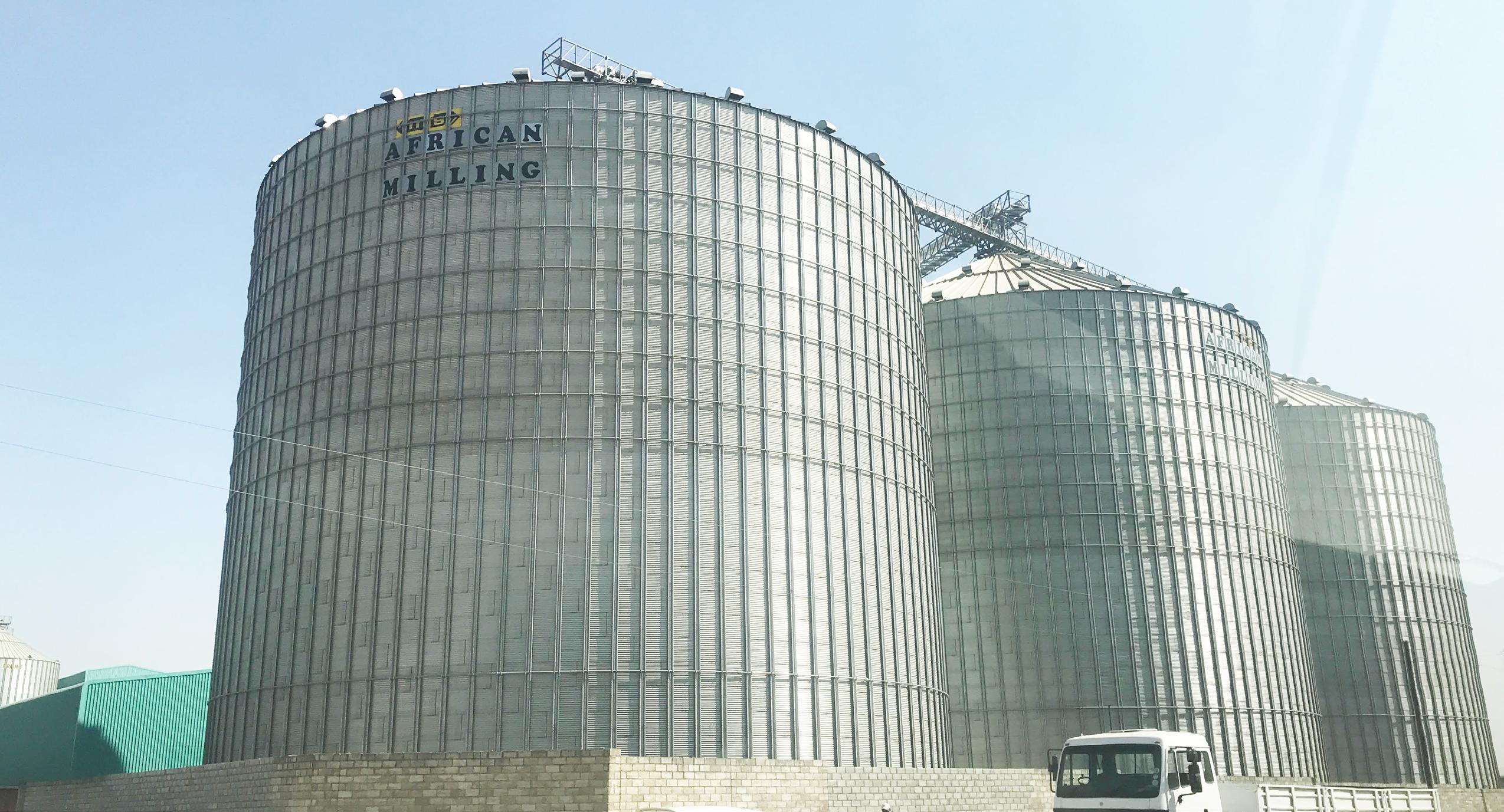 By Antony Chapoto, Ntombifuthi Tshabalala and Simon Roberts
By Antony Chapoto, Ntombifuthi Tshabalala and Simon Roberts
African countries face great challenges in adapting to climate change to meet growing demand for food. The current drought in East Africa is the latest manifestation of changing weather patterns.
But countries such as Zambia, where there is good land and water, have major opportunities to meet food demand by growing agriculture exports and processing their produce. Zambian farmers can earn substantial returns from increased production. Their production can also alleviate the pressures in countries such as Kenya.
To realise these opportunities, Zambian products have to reach export markets at good prices. For this, Zambia needs competitive cross-border markets and efficient transport and logistics services. However, regional grain and oilseeds trade is not working for producers
in Zambia or for buyers in East Africa, with huge variances in agricultural commodity prices in Kenya and in Zambia.
Our reality check on the workings of crossborder markets points to regional integration being the key to unlocking massive potential for Zambia to anchor sustainable agricultural growth in Africa. But effective regional integration remains a dream, undermining Zambia’s potential.
How are markets really working for Zambia?
Zambian agriculture has been a growth story with expanding net exports in important products such as soybeans. However, this performance is very short of where it should be. Zambia should be the grain basket for the whole region. Malawi has shown what is possible in soybeans. It almost doubled production in 2019/2020, to 421,000 tonnes, more than Zambia in that year.
A major issue is how cross-border markets
are working, or not working. Zambian suppliers report having substantial volumes of soybeans which can meet the huge regional demand.
Market prices for maize in Nairobi climbed to over US$500/Mt in June 2022, reaching similar levels in Kampala, Uganda (Figure 1). In early July, prices were reported to have climbed well above US$750/Mt in Kenya. Meanwhile prices in Zambia were around US$220/Mt or 3,700 kwacha/Mt.
Though lower than Kenya’s, Zambian maize prices are still substantially higher than last year’s. This is in line with global trends. With higher input costs, farmers need higher output prices to incentivise production.
The gap between prices in Zambia and those in Nairobi and Kampala is close to US$300/Mt. This is double what would be explained by the efficient cost of transporting maize from Zambia to these countries. Efficient transport costs take account of reasonable trucking, logistics and border costs.
Even with the higher fuel costs, grain should cost around US$150/ Mt to be transported from Lusaka to Kampala and Nairobi. Of course, quoted transport rates may be much higher, but this reflects the many problems in cross-border transport which need to be addressed.
The situation is even more extreme in soybeans, which are a much higher value commodity. Zambia’s bumper soybean harvest in 2022 was being sold at prices around US$550/Mt in June, with prices even being quoted as low as US$439/Mt at the end of the month. Prices in East Africa were well over US$1,000/Mt, some US$500-700/ Mt above those in Zambia. This is three to four times the transport costs.
In other words, producers in Zambia should be getting more for their crops and buyers in East Africa should be paying less, alleviating the food price spikes there.
How can this be and what is to be done?
A combination of factors is
undermining the growth of Zambia.
First, reliable market information is required to link buyers and suppliers, and to enable markets to work. In the absence of information, it’s risky to export. This lack of information affects small and medium sized farmers and businesses. Large-scale traders who have operations across the region have an advantage over smaller businesses and farmers because they have private information.
Second, the market players require clear trade policy signals to take advantage of export opportunities. Any hesitation or mixed signals tend to undermine the ability to make deals with confidence. It is therefore important for Zambia’s new government not to impose ad hoc trade restrictions, for example, as the previous government did in August 2021 to restrict maize exports. Such restrictions, imposed and lifted from month to month, mean deals cannot be made with the confidence that they can be fulfilled.
Third, the market opportunities in East Africa require urgent regional co-operation to improve transport corridors on the ground rather than in rhetoric.
Malawian soybean suppliers have shown the value. Small suppliers have already been using the African Market Observatory data on East African prices in 2022 to negotiate better prices for their exports. This increased realised prices by around $200/Mt more than they would otherwise have accepted.
Zambian farmers could reap similar benefits too. This would support a big push in production, enabling Zambian farmers to invest in improved agricultural systems. This is even more essential as next year is likely to be another La Niña weather pattern which sees good rains in Zambia and poor rains in parts of East Africa and the Horn of Africa.
The ongoing effects of climate change mean more investment is required to make agriculture resilient. This involves investments in water management, irrigation, storage
facilities, advice and information systems.
The vulnerability of the whole of Southern and East Africa as a climate “hotspot” means urgent and coordinated regional action is required.
But Zambia doesn’t have to wait for this action.
It can lead in championing sustainable agricultural growth in the knowledge that this is essential for resilient food supplies across the region. This requires good policies with a longer-term vision. The country needs, without any reservations, to fully back regional integration and competitive regional markets. Excessive margins cannot be captured by connected so-called “middlemen”.
Greater certainty for businesses needs to be accompanied by enforcement of clear rules for company power. Regional competition enforcement by the Competition and Consumer Protection Commission of Zambia together with the COMESA Competition Commission is a key part of fair and competitive markets which work for all.
Investment is required in critical infrastructure such as storage for smaller market participants to use on fair terms. Finance can be mobilised, such as that being made available by the African Development Bank.
It is essential to support regional research networks, such as those led by the Indaba Agricultural Policy Institute and the African Market Observatory of the Centre for Competition, Regulation and Economic Development and partners.
Antony Chapoto is the Research Director, Indaba Agricultural Policy Research Institute (IAPRI); Ntombifuthi Tshabalala is an Economist at Centre for Competition, Regulation and Economic Development, University of Johannesburg; and Simon Roberts is Professor of Economics and Lead Researcher, Centre for Competition, Regulation and Economic Development, UJ, University of Johannesburg
Source: The Conversation
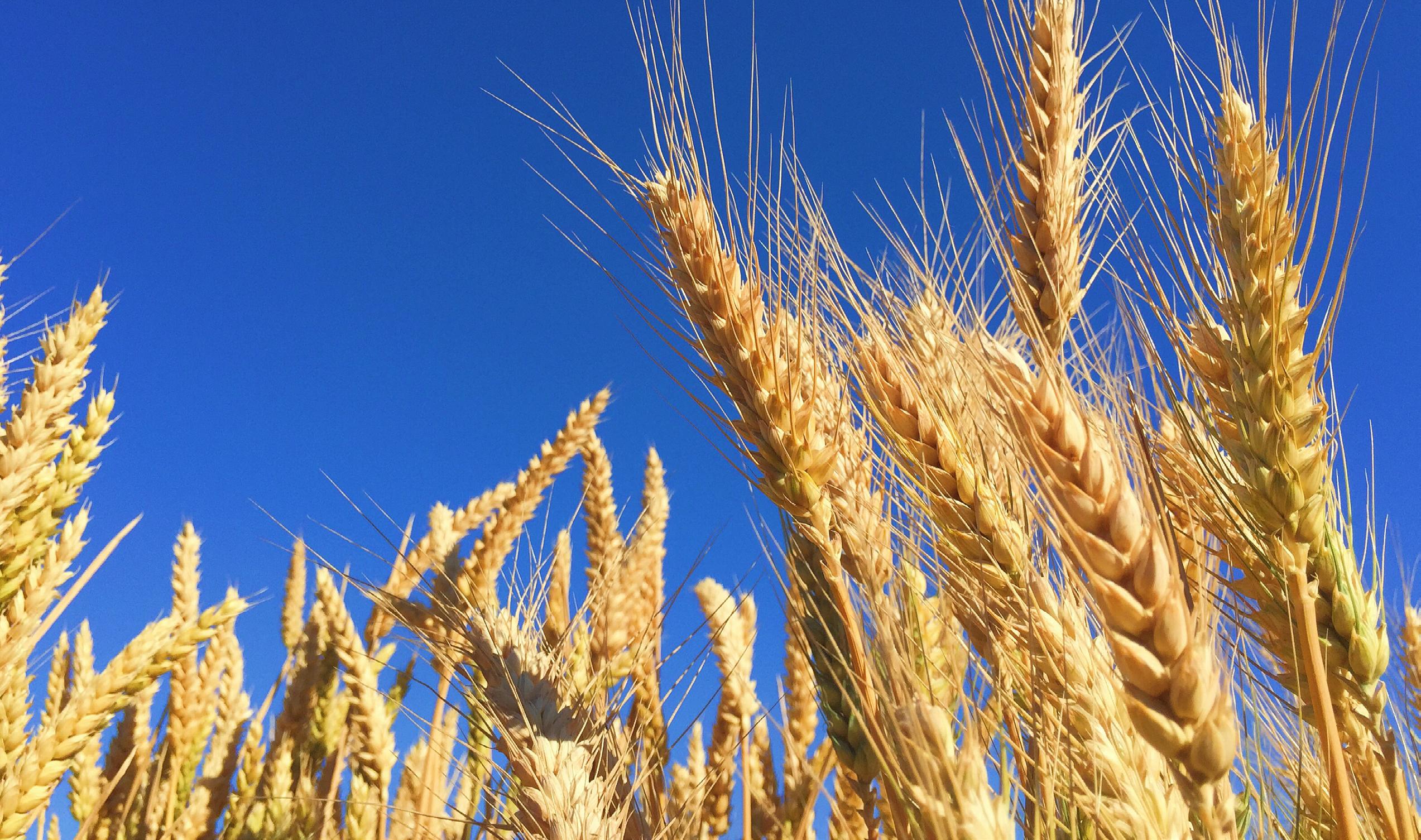 By Billene Seyoum - Press Secretary, Office of the Prime Minister of Ethiopia
By Billene Seyoum - Press Secretary, Office of the Prime Minister of Ethiopia
In the past two years, Ethiopia has emerged on news headlines in an often-misleading manner in relation to the conflict in the northern part of the country. In parallel to addressing the challenges and threats posed by a belligerent rebel group, the country has been hard at work making significant progress in vast development areas. Wheat production in the agriculture sector is one such milestone.
Ethiopia’s Ten-Year Development Plan (2021-2030) identifies quality and sustained economic growth focused on key productive sectors like agriculture. As one of the productive sectors selected to accelerate economic progress, ensuring national food security is a vital national strategy.
To this end, development of medium and large-scale irrigation infrastructure is being given due focus, among other contributing factors. Particularly noteworthy in this
sectoral focus is the ambition to enable import substitution of key agricultural commodities like wheat.
For a developing country like Ethiopia with a burgeoning youth population, achieving food self-sufficiency and import substitution is a game changer. Highly susceptible to climate change and recurrent droughts, Ethiopia’s agricultural landscape has been fast shifting over the past three years owing in particular to an enhanced policy. Previous agricultural policies have been heavily reliant on wheat productivity during the two main crop seasons known as belg and meher as well as highland production.
Over the past three years, Prime Minister Abiy Ahmed's government has initiated a push for production of summer wheat, adding a third cropping season through utilising medium and large-scale irrigation schemes as well as a cluster farming approach.
With the help of modern seeds, irrigation and mechanisation, the government made additional efforts to reap from Ethiopia's vast land resources. But if we were to use such inputs, we knew scale matters. As farmers pooled their lands together through clustering, they have found it easier to access and make the most of technology.
During the past Ethiopian fiscal year alone, the country has managed to produce 16.2 million quintals (1.62 billion kilogrammes) of irrigated wheat over 405,000 hectares of land in the first round of cultivation. In the second round, Ethiopia cultivated 8.35 million quintals (835 million kilogrammes) of irrigated wheat from 208,000 hectares of land since the launch of the initiative in 2018 on a mere 3,500 hectares.
These outcomes are a direct result of proactive government commitment to direct resources to this sector. It is also a product of persistent high-level follow-up.
Among the number of consecutive engagements Prime Minister Abiy Ahmed makes in any given month, follow-up on agricultural productivity is one of them. Often present in various wheat and other commodity producing sites, those engaged in the cultivation process, cite the presence, constant follow-up and intimate knowledge of the Prime Minister as encouraging to their endeavours.
While Ethiopia embarked on efforts to enhance wheat productivity in the past two years, the Covid-19 pandemic and recent Ukraine crisis have made it evident that volatility of the global commodities market greatly impacts countries like Ethiopia. As a region, East Africa is highly dependent on wheat imports, with 90 per cent sourced from Russia and Ukraine in 2020.

As a year of accelerating food inflation shows us, more production doesn’t automatically translate to optimal or stable price. We also need to support cooperatives and other modern marketing institutions that facilitate for farmers to earn more and for consumers to pay less.
Ethiopia had been prone to wheat import dependency for several decades. Domestic demand for wheat has also been expanding at a slightly higher rate than domestic production.
Around 29 percent of the share of expenditure by the poorest rural and 21 percent of share of expenditure by poorest urban households is directed towards the purchase of cereals including wheat. Inevitably, global commodity price shocks hit the poorest first, as has been the case with the current wheat price shock.
Hence, the efforts being made in the past two years with irrigated wheat as a key driver to substitute imports are not without tangible cause.
In fact, Prime Minister Abiy Ahmed has vowed to not only substitute wheat imports by next year, but also to produce surplus for exports. Endowed with abundant arable land, the success factor in achieving self-sufficiency and wheat exports is rooted in the government’s plan of scaling up the initiative to one million hectares of land for wheat cultivation. Per Ethiopia’s Ministry of Agriculture, the scale up aims to support local food industries in fulfilling their needs with the right varieties like durum wheat.
While Ethiopia has harnessed key lessons from this particular experience, the practice of expanding sources of irrigation will be instrumental to meeting set targets. Needless to say, engagement and close monitoring of progress at the highest level of government has been and will continue to be a factor for success.
The right ingredients are in place for the country to excel in the targets that have been set. Ethiopia will soon be winning with wheat!
PRIME MINISTER ABIY AHMED HAS VOWED TO NOT ONLY SUBSTITUTE WHEAT IMPORTS BY NEXT YEAR, BUT ALSO TO PRODUCE SURPLUS FOR EXPORTS


